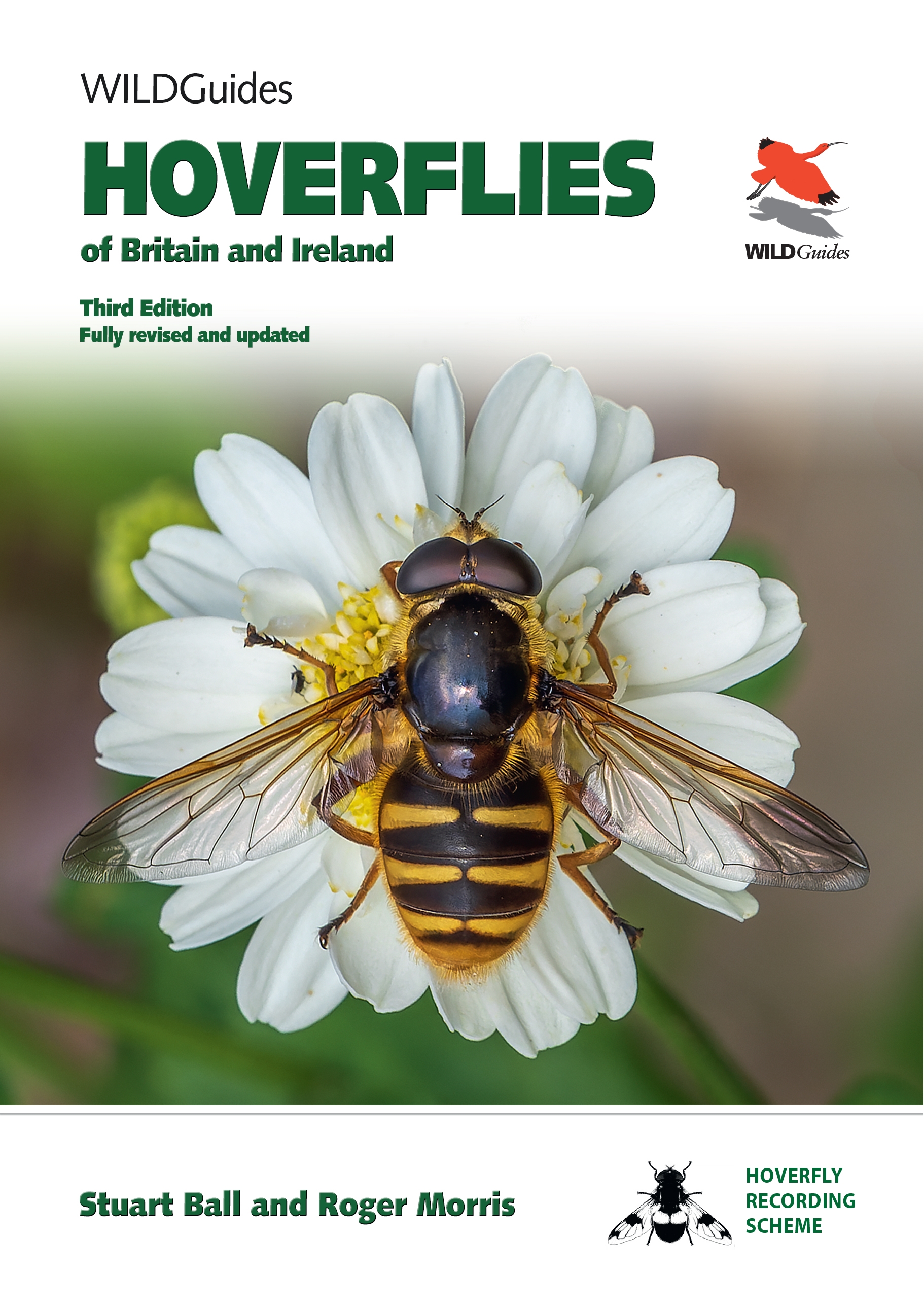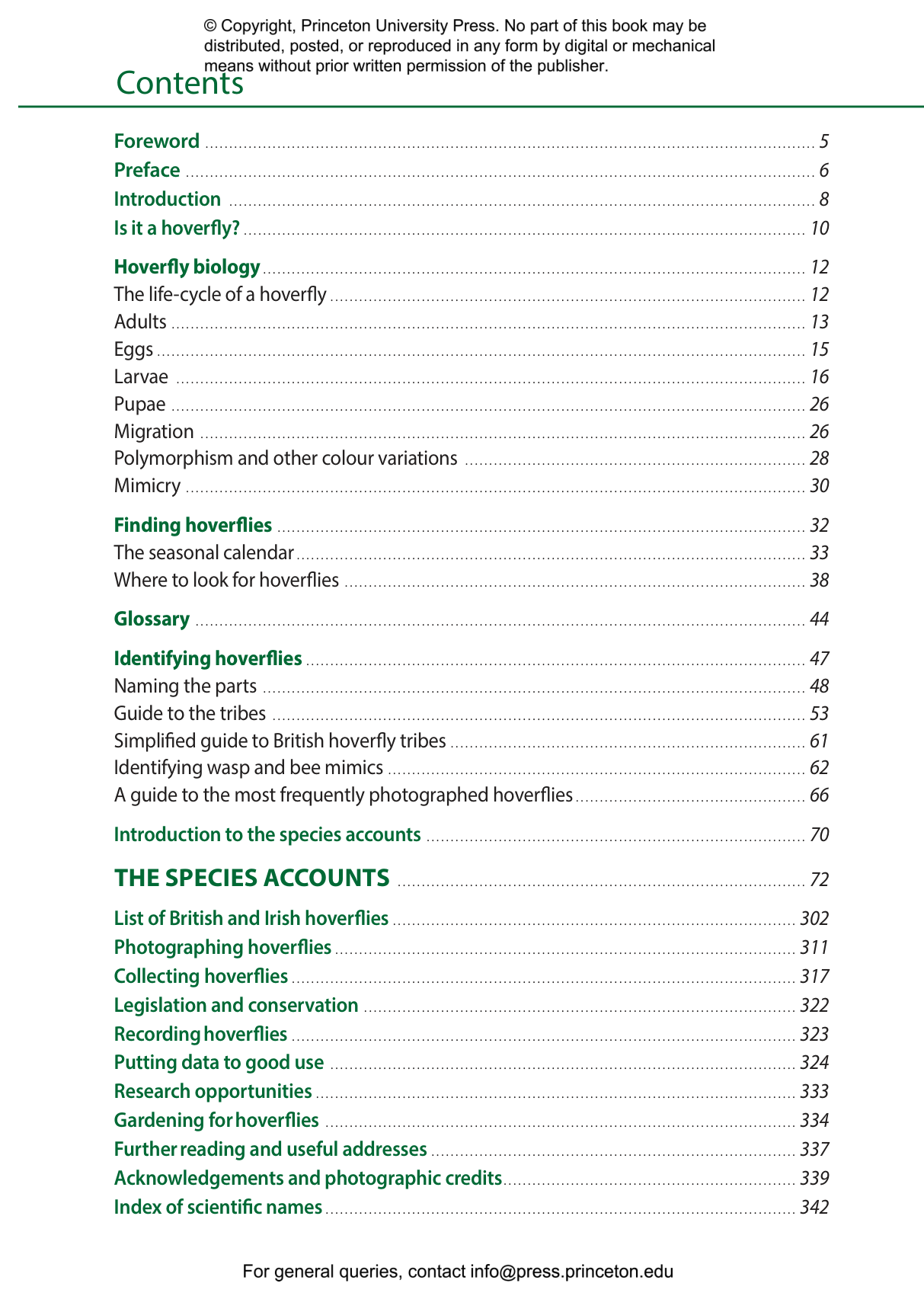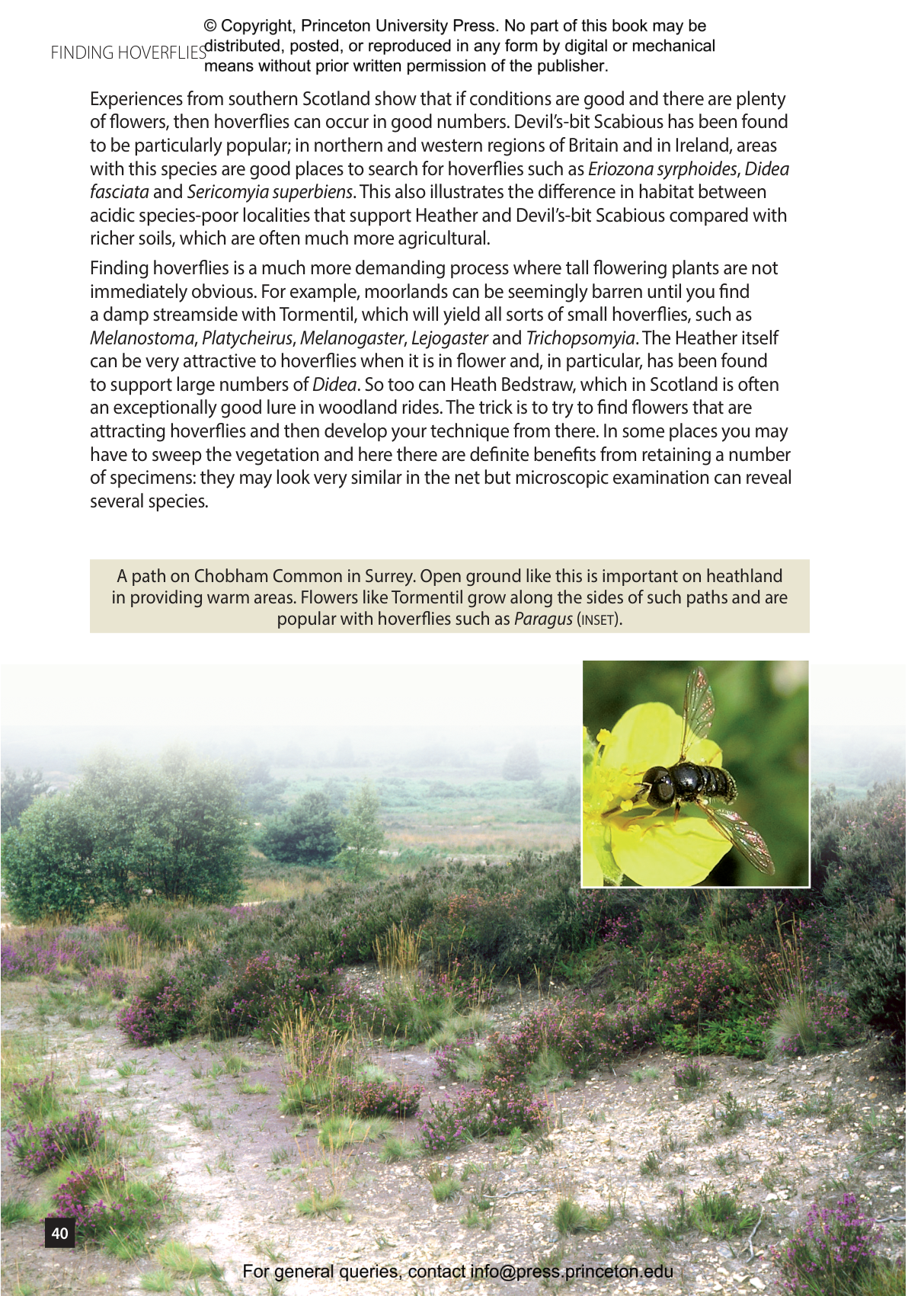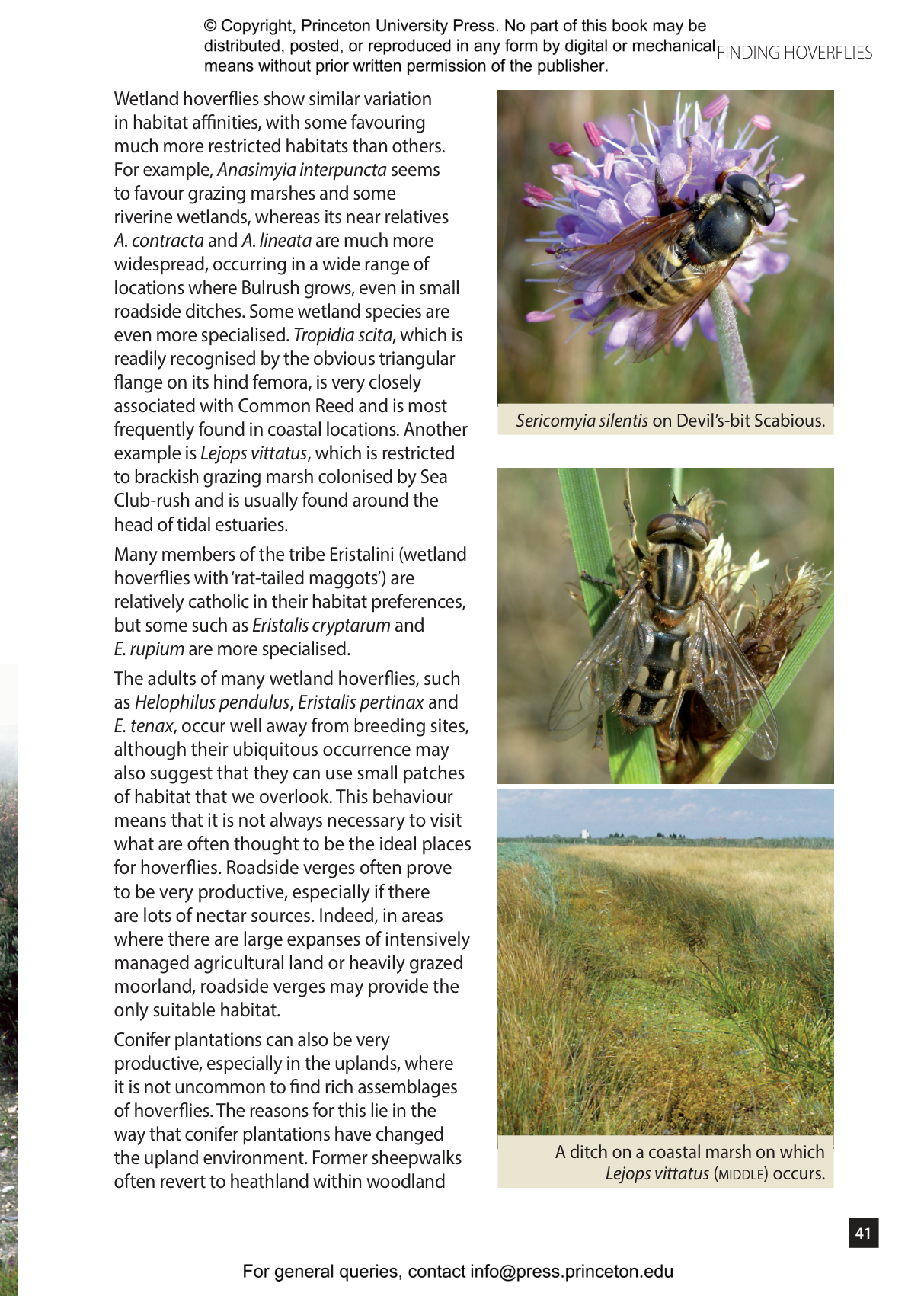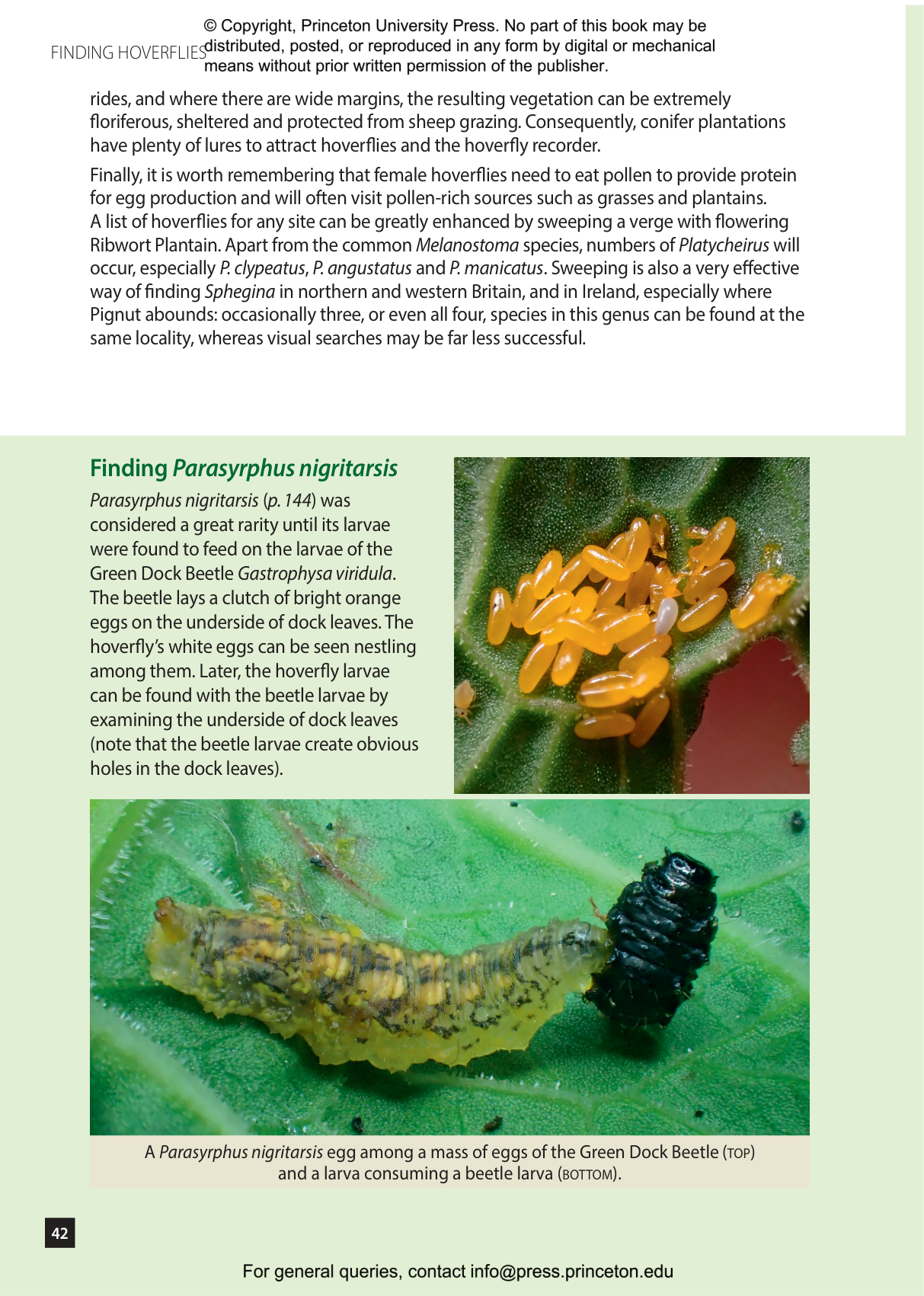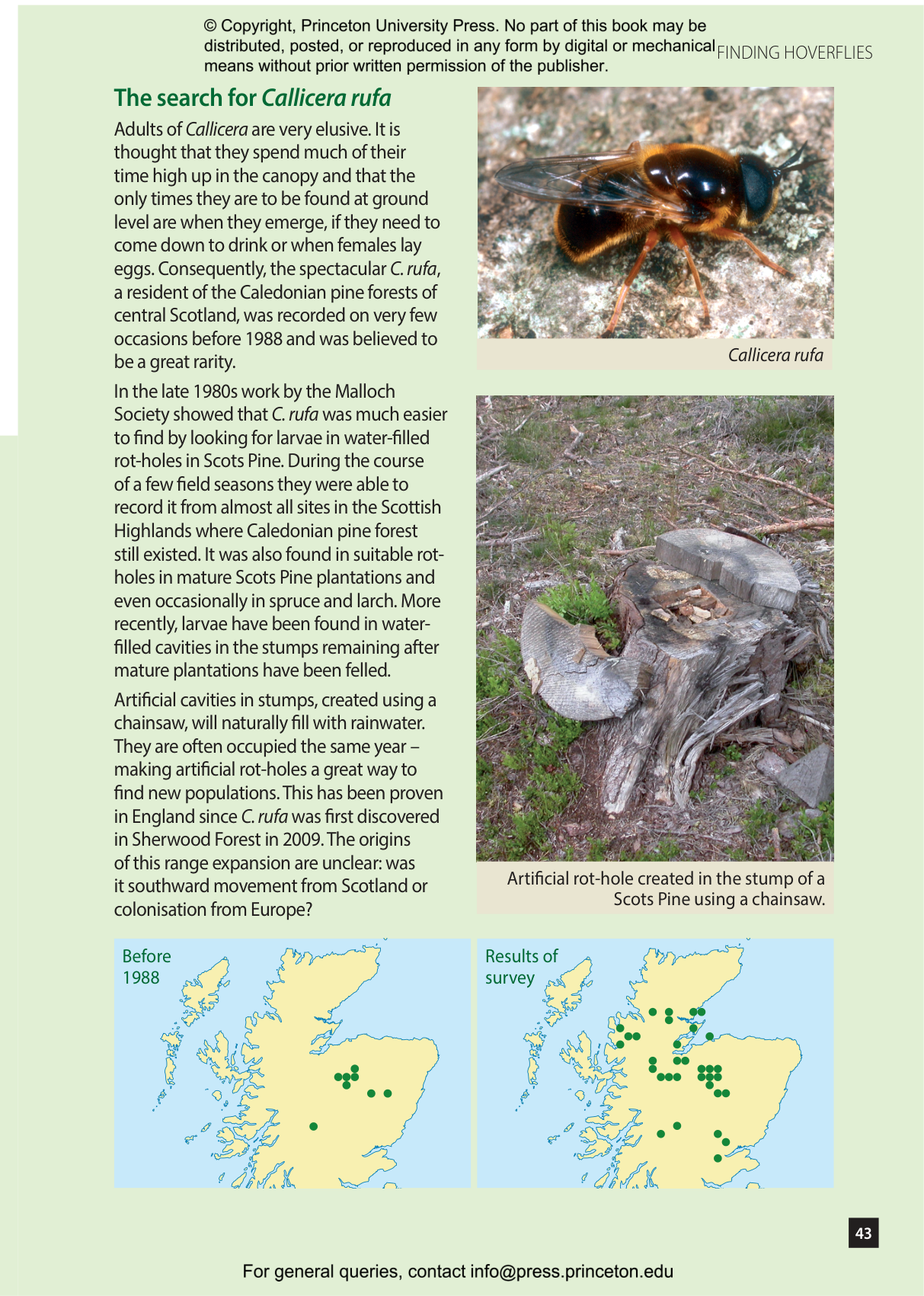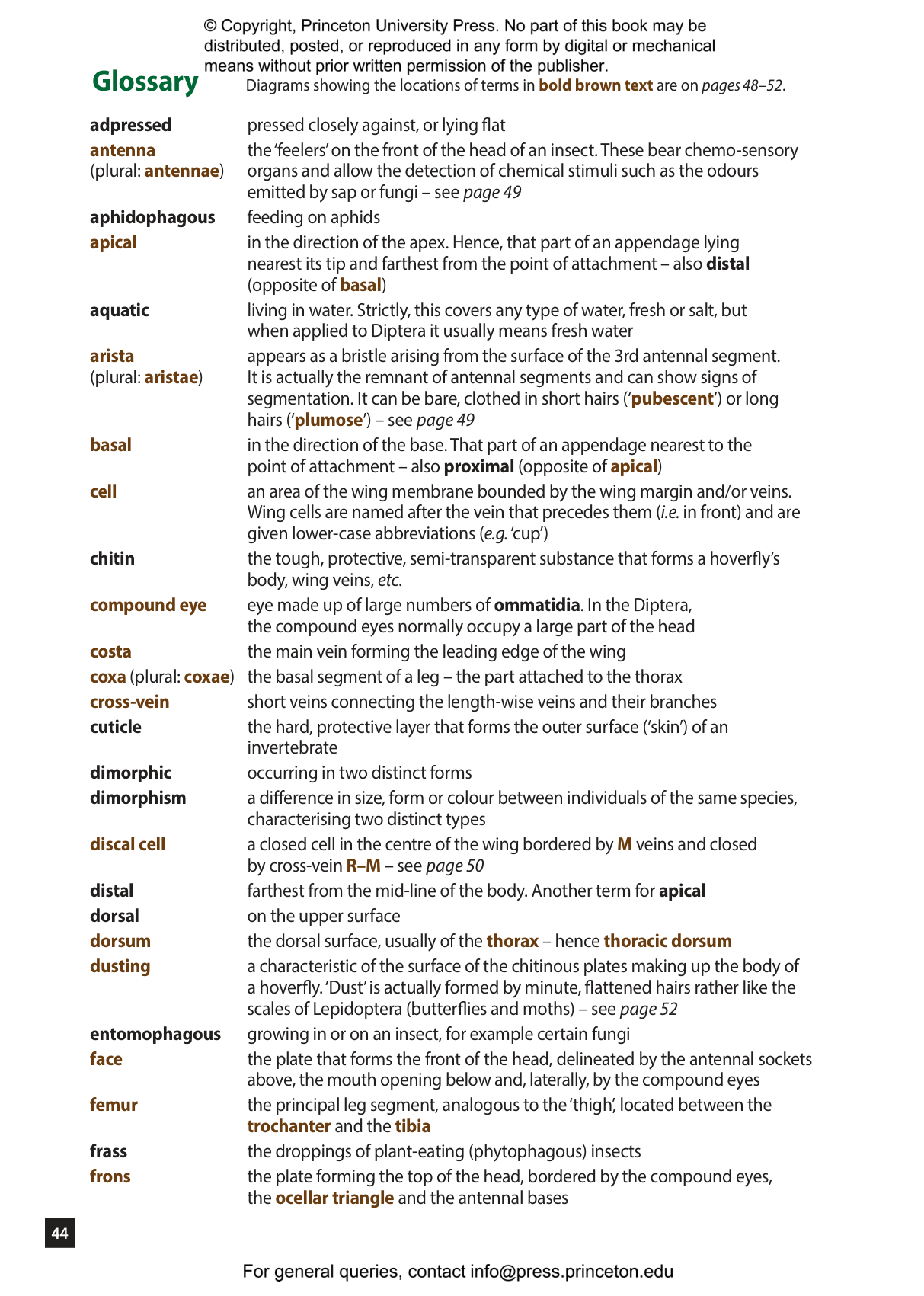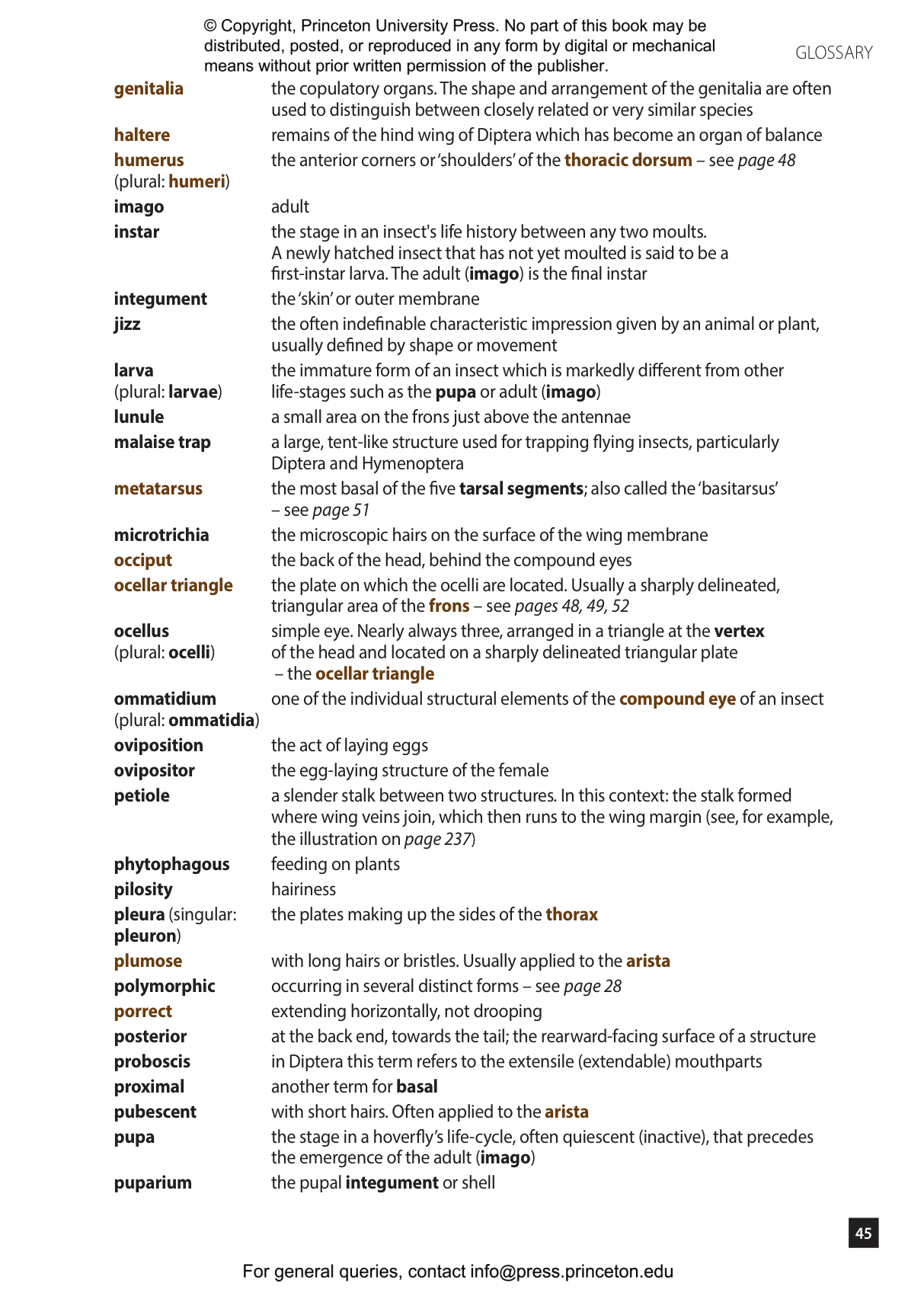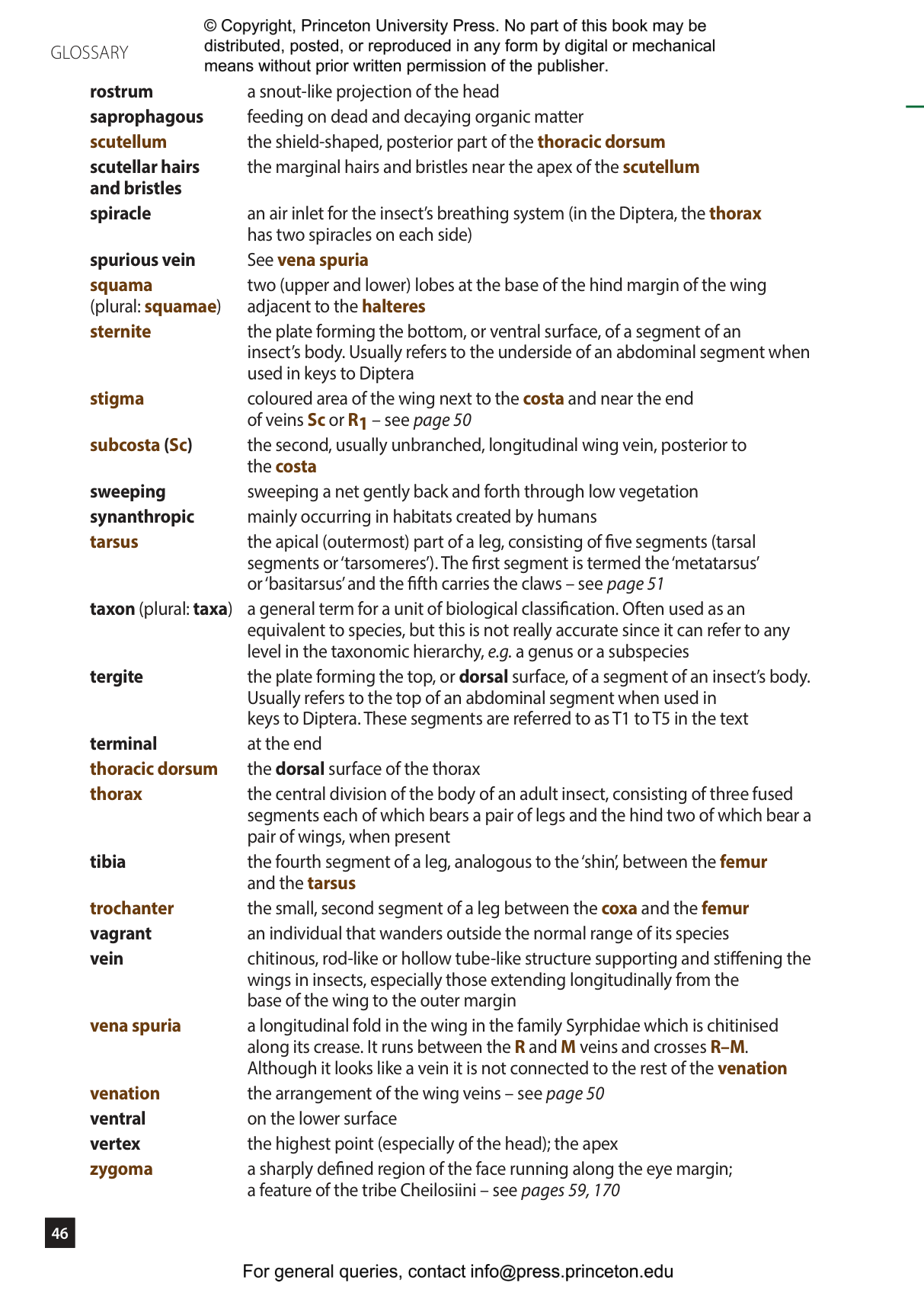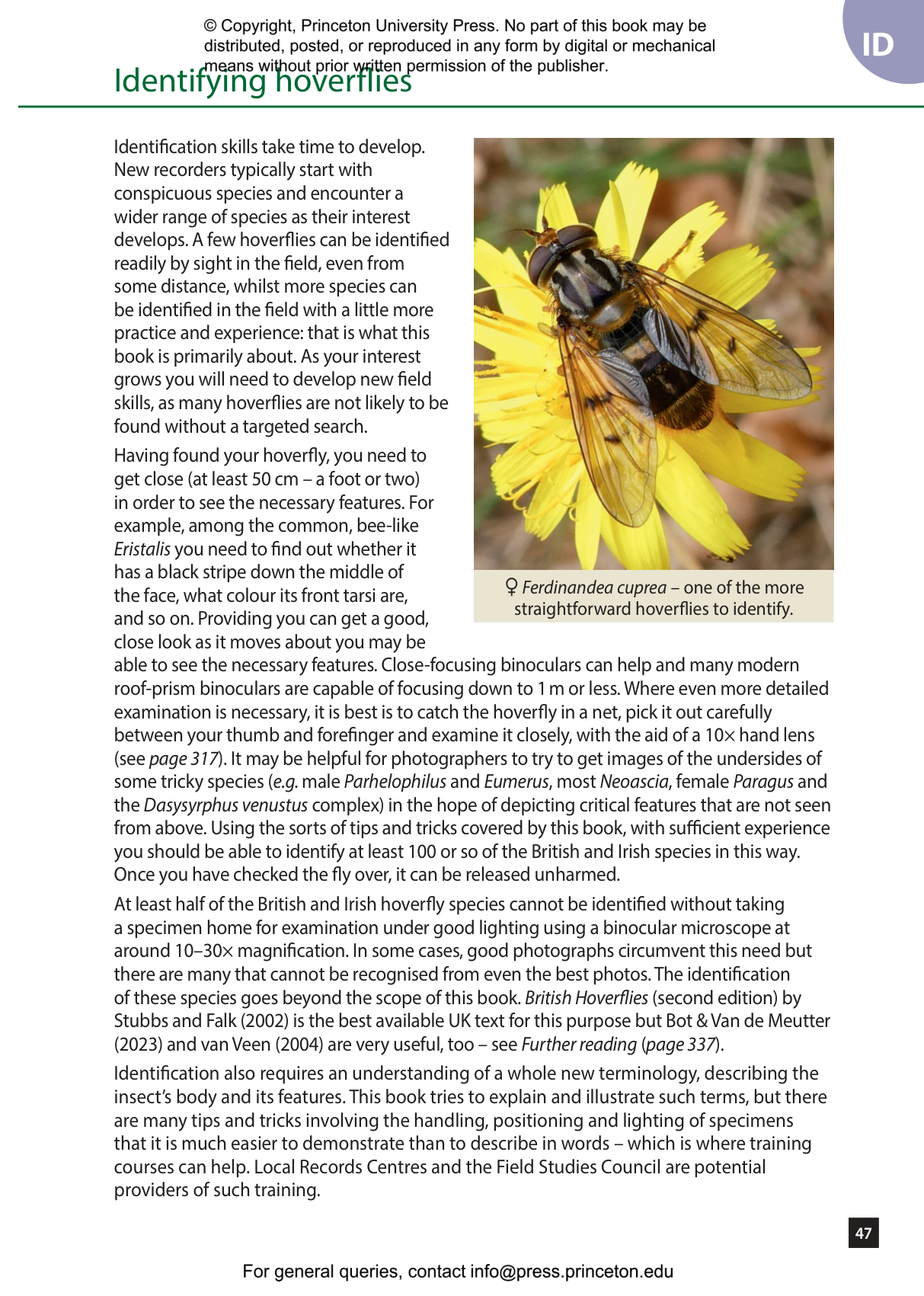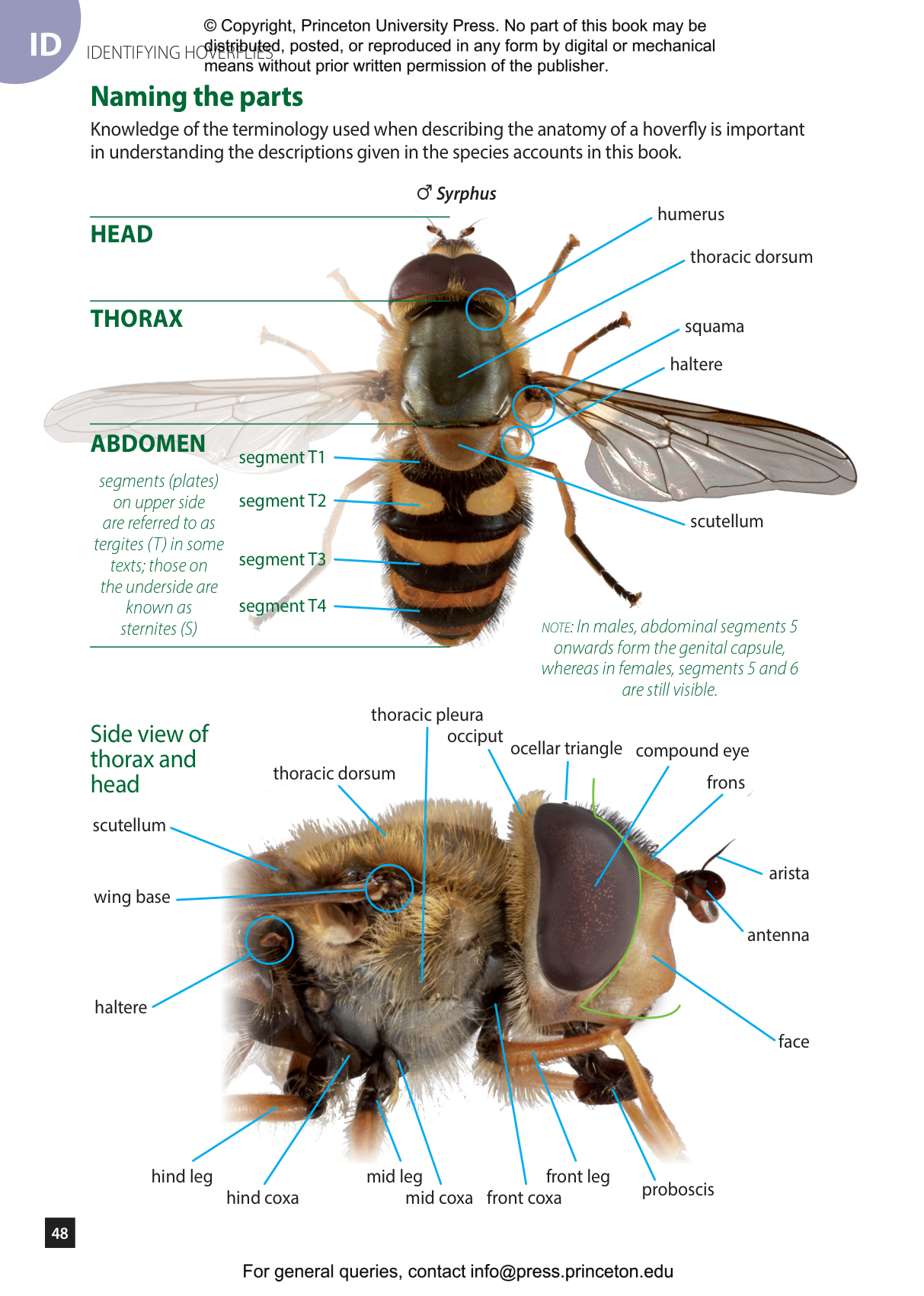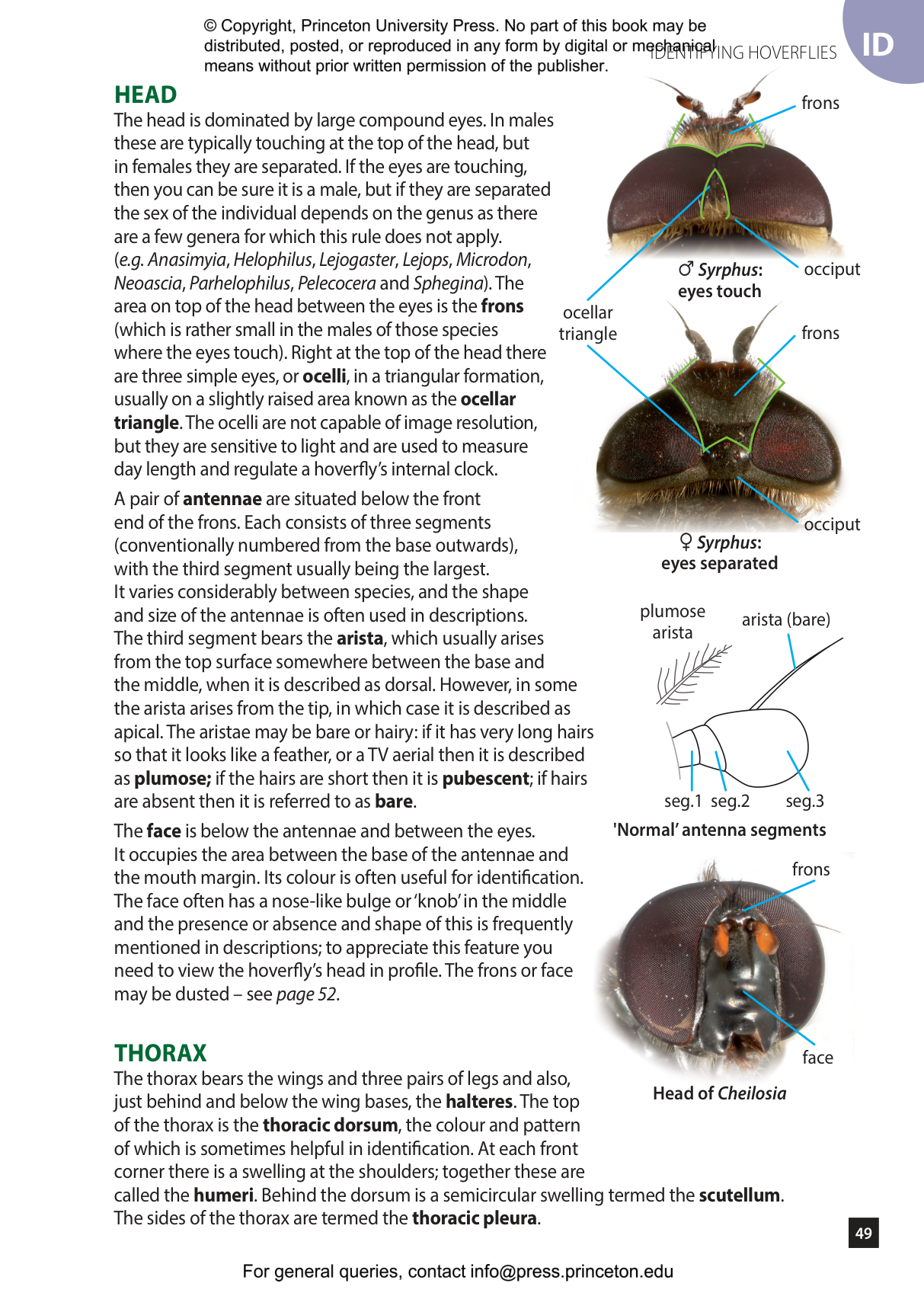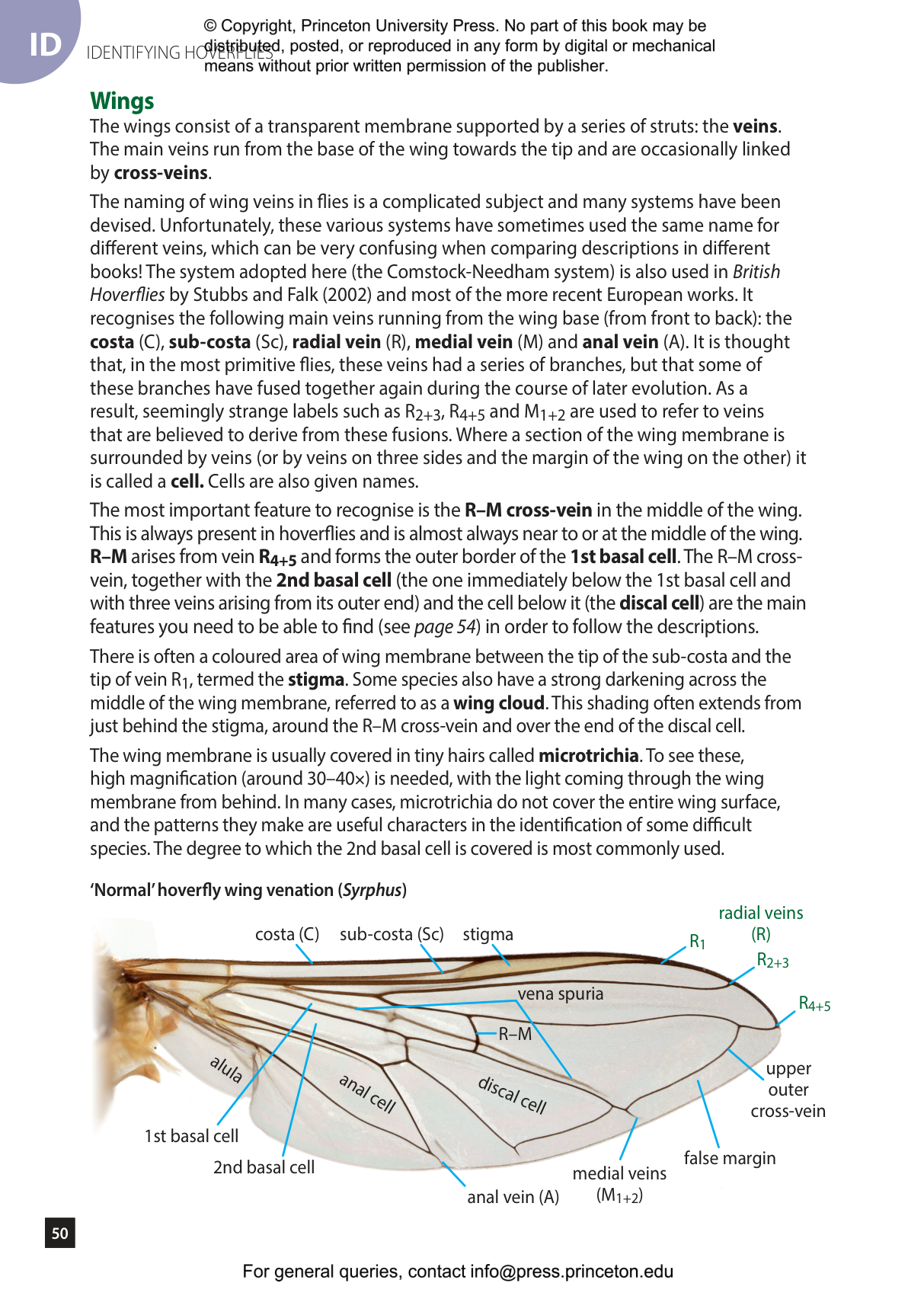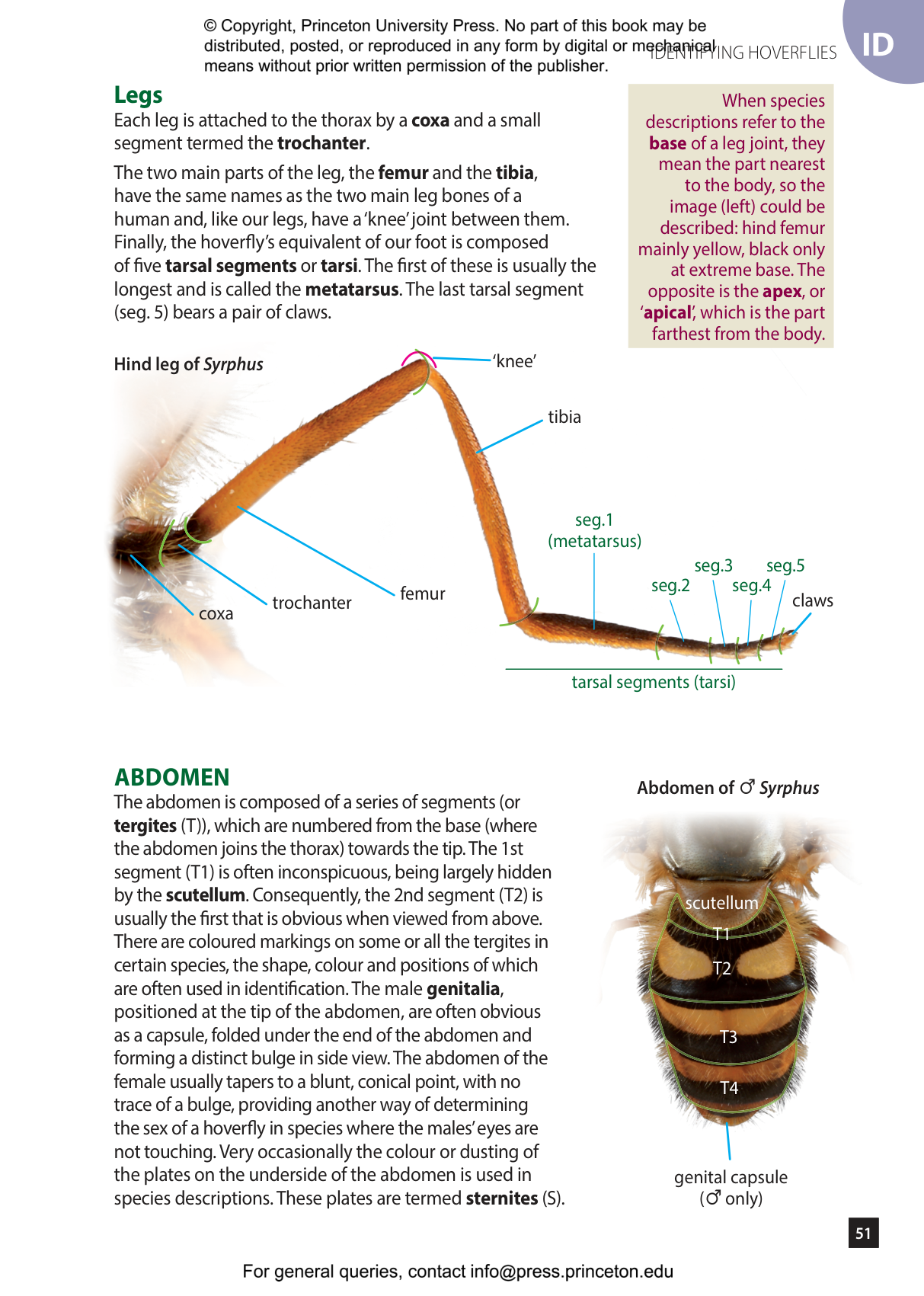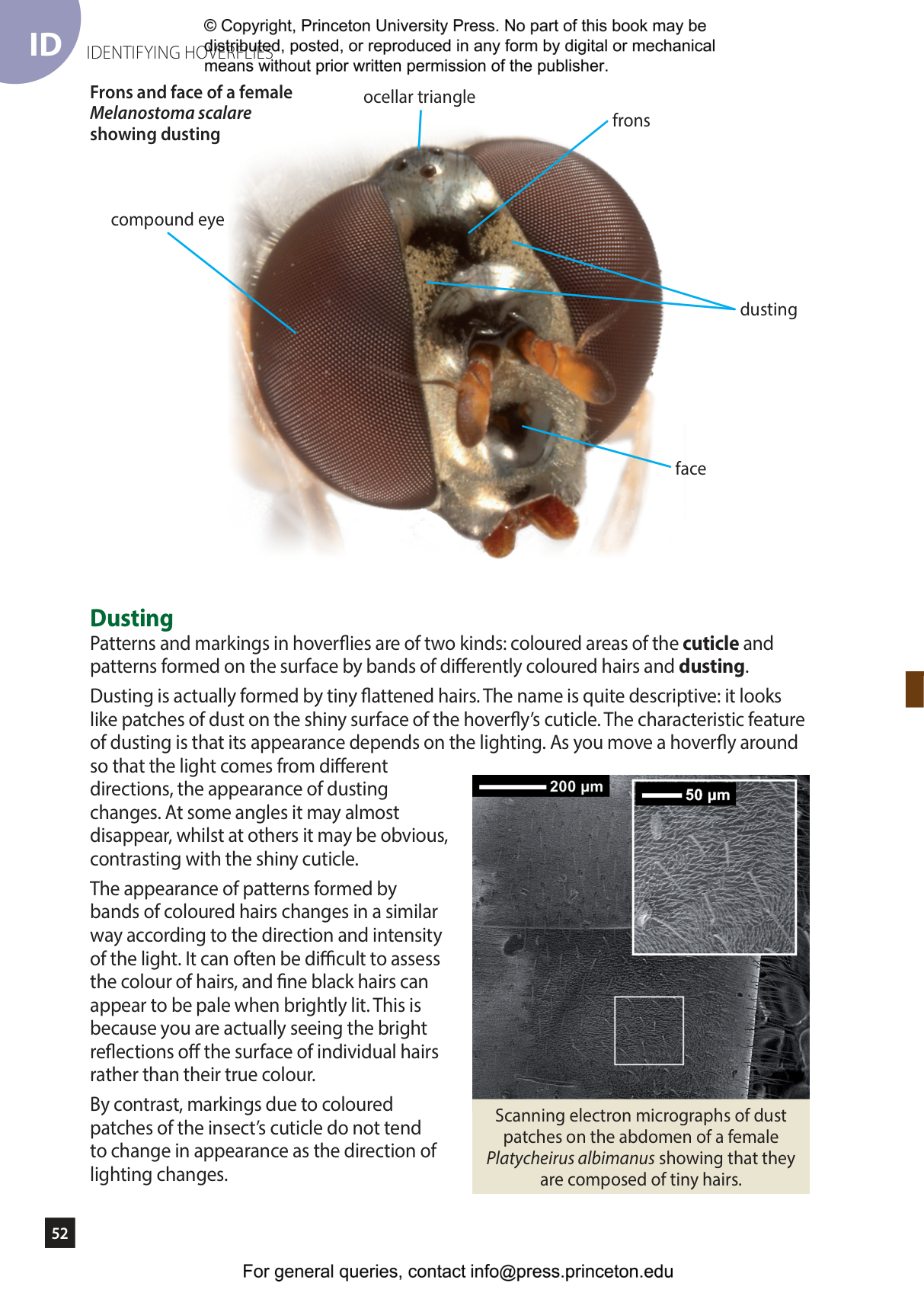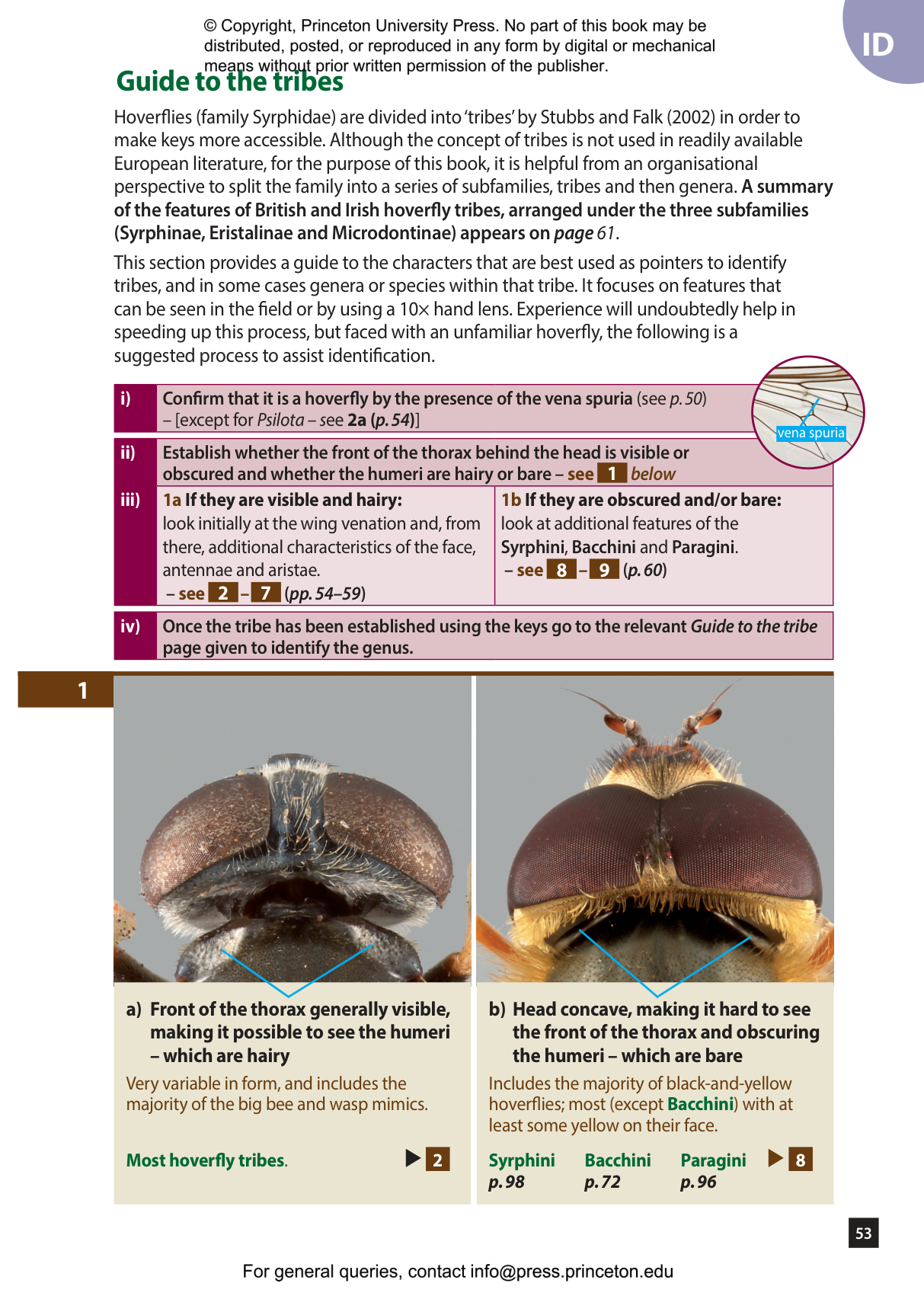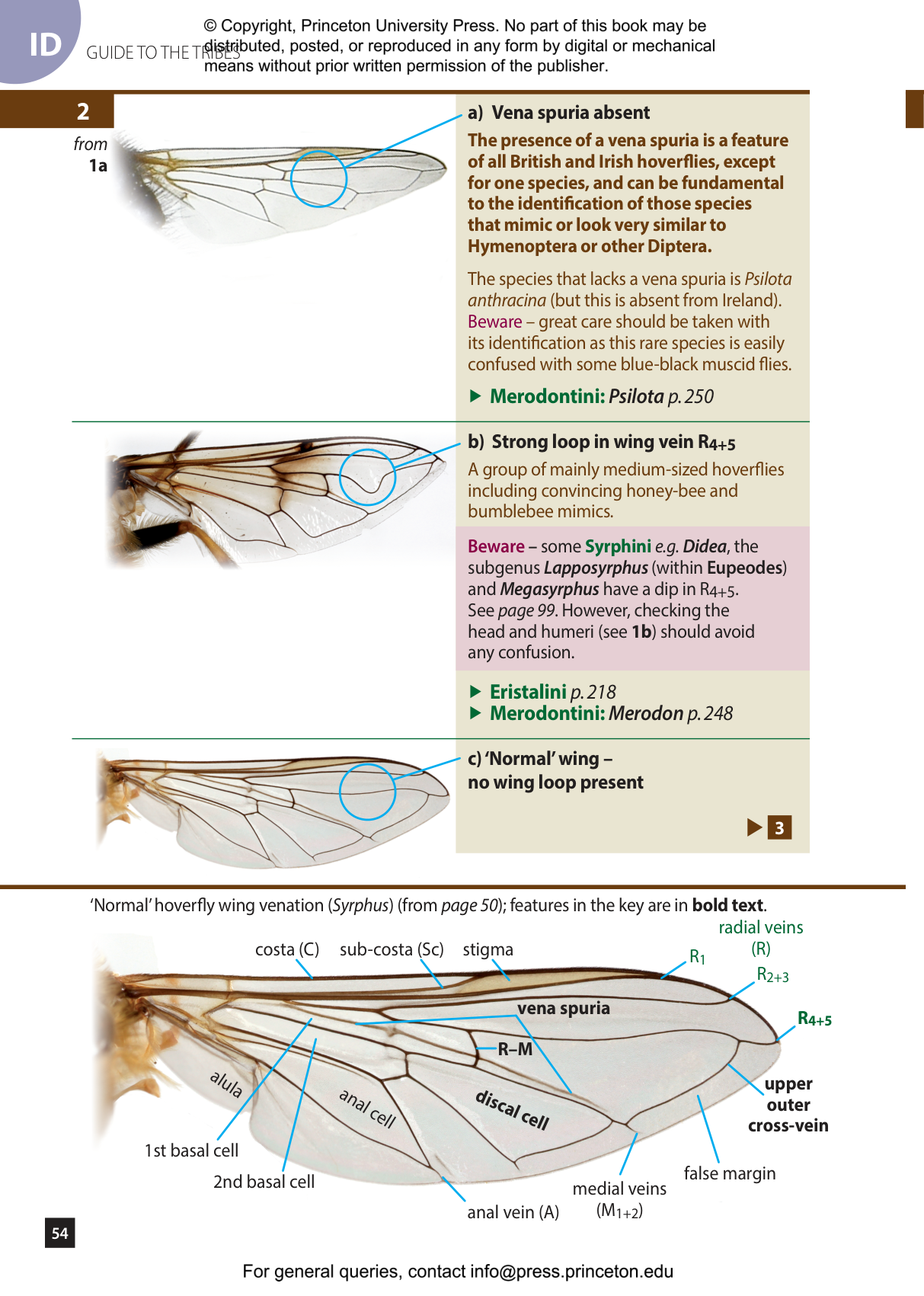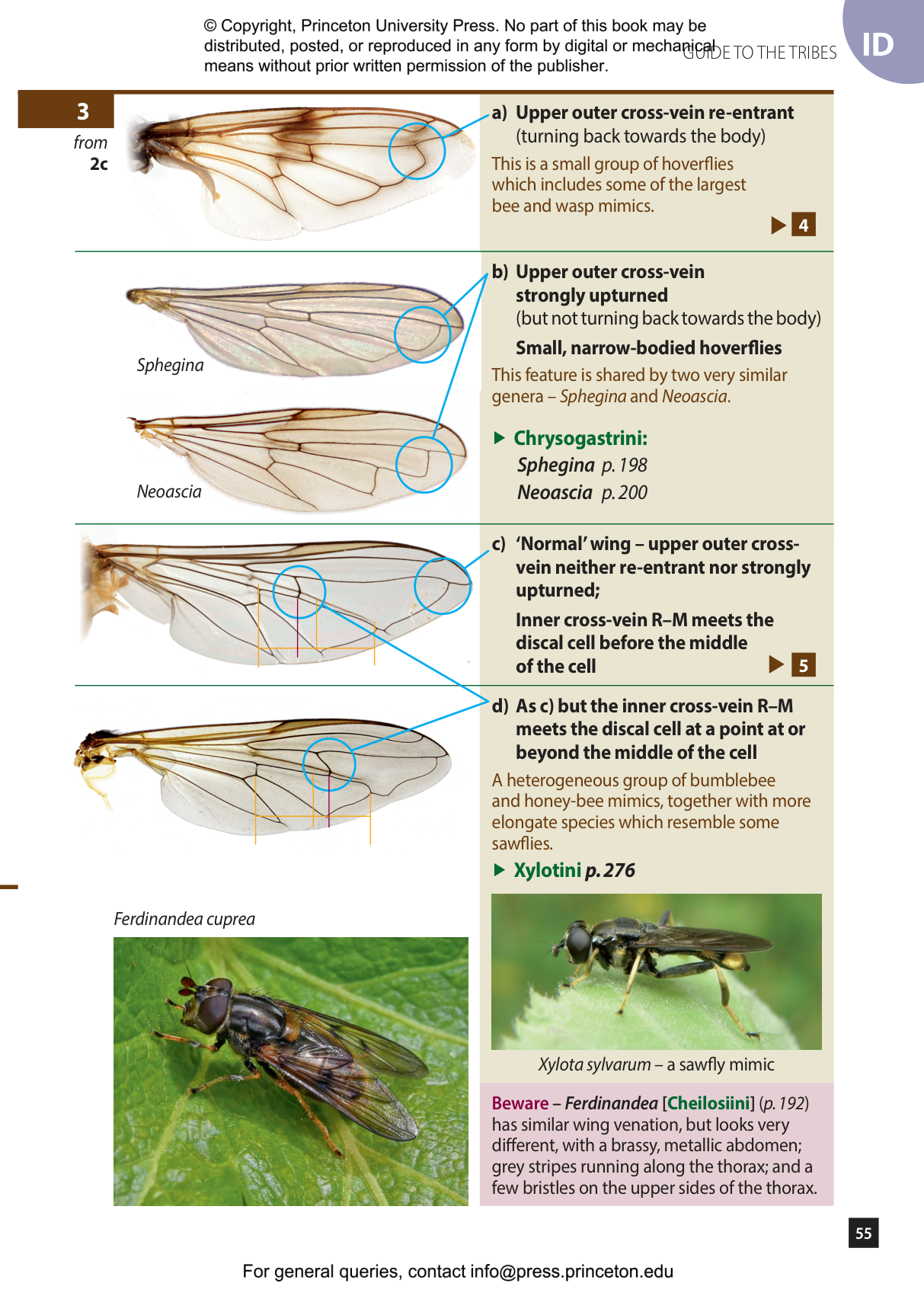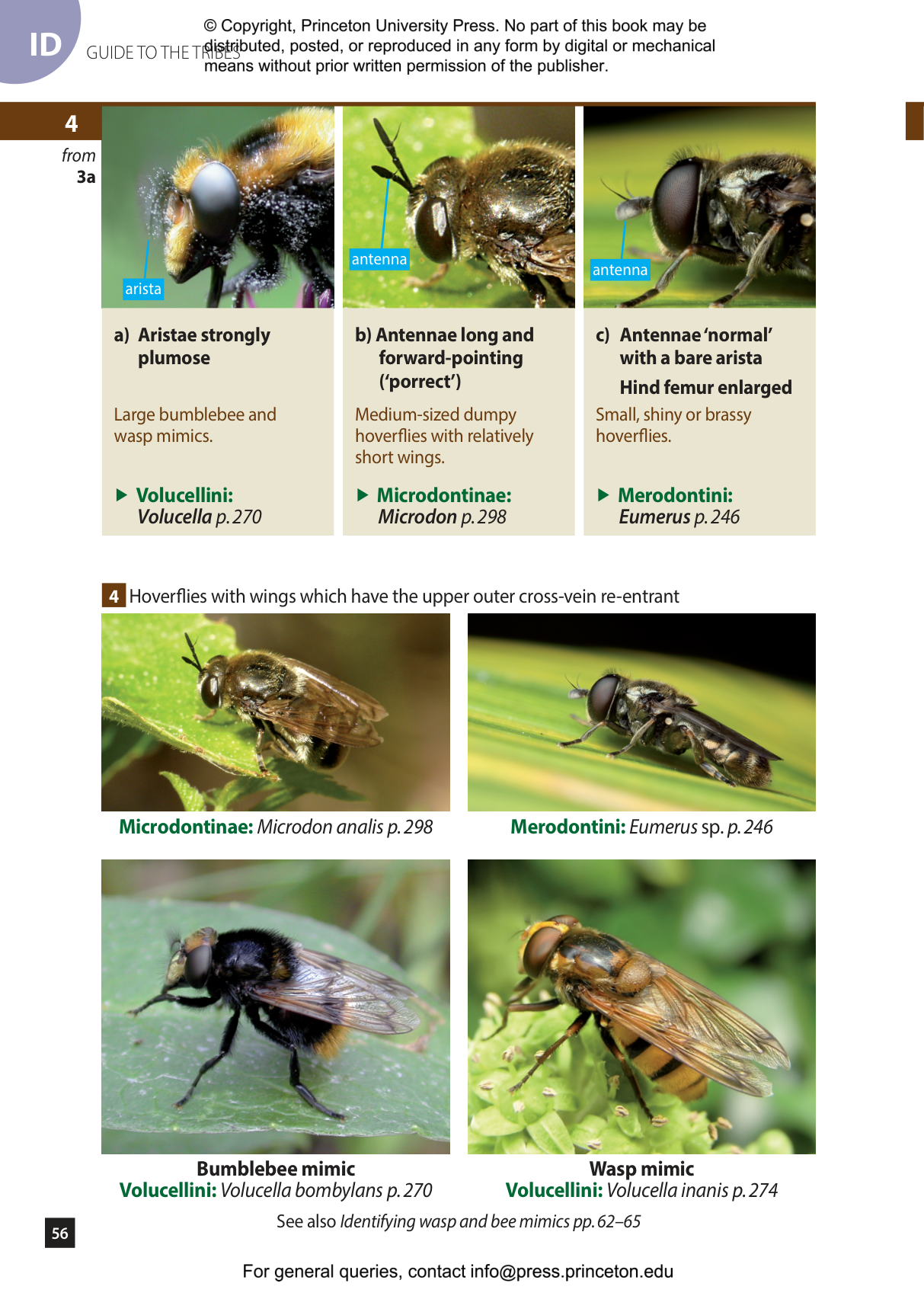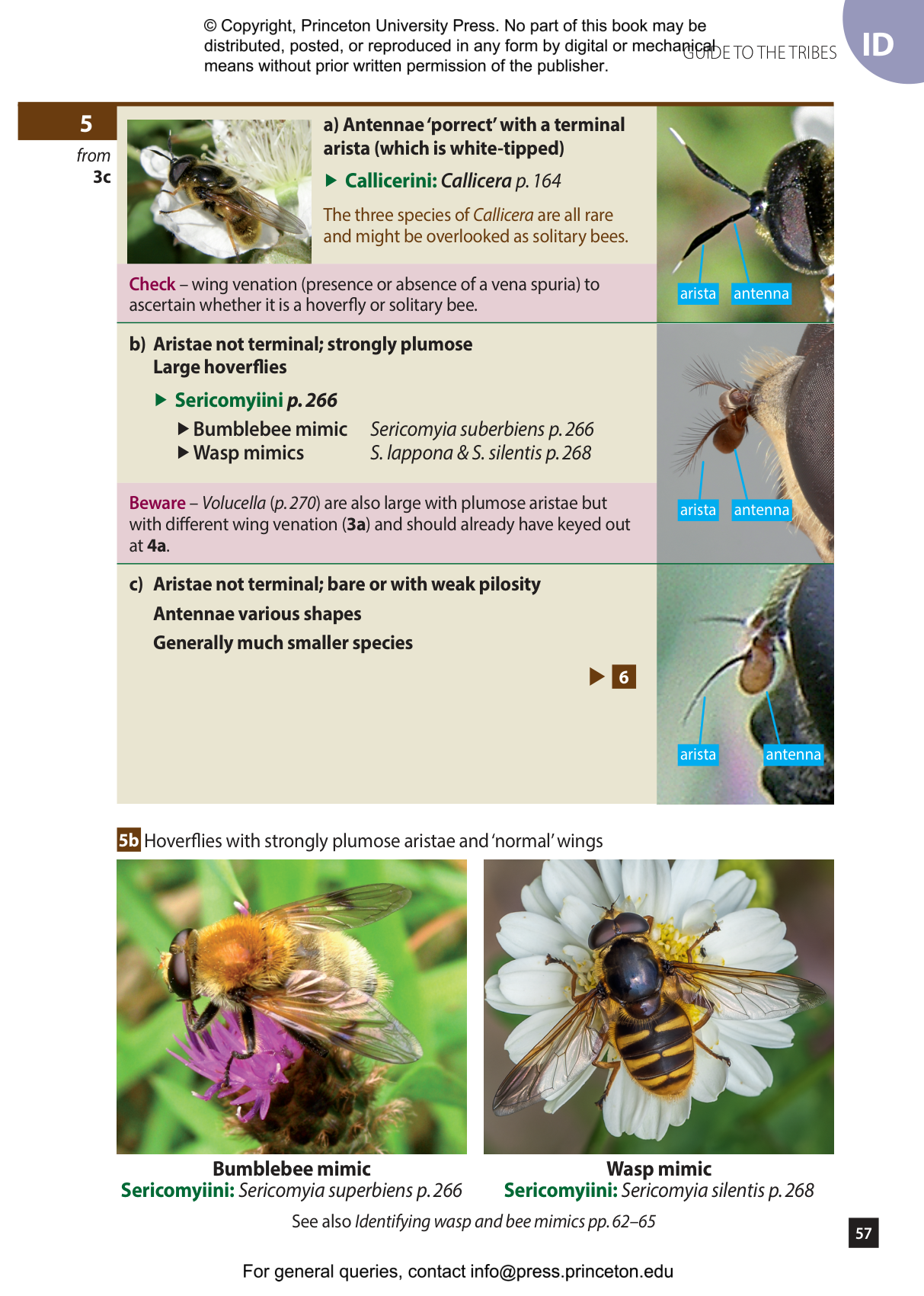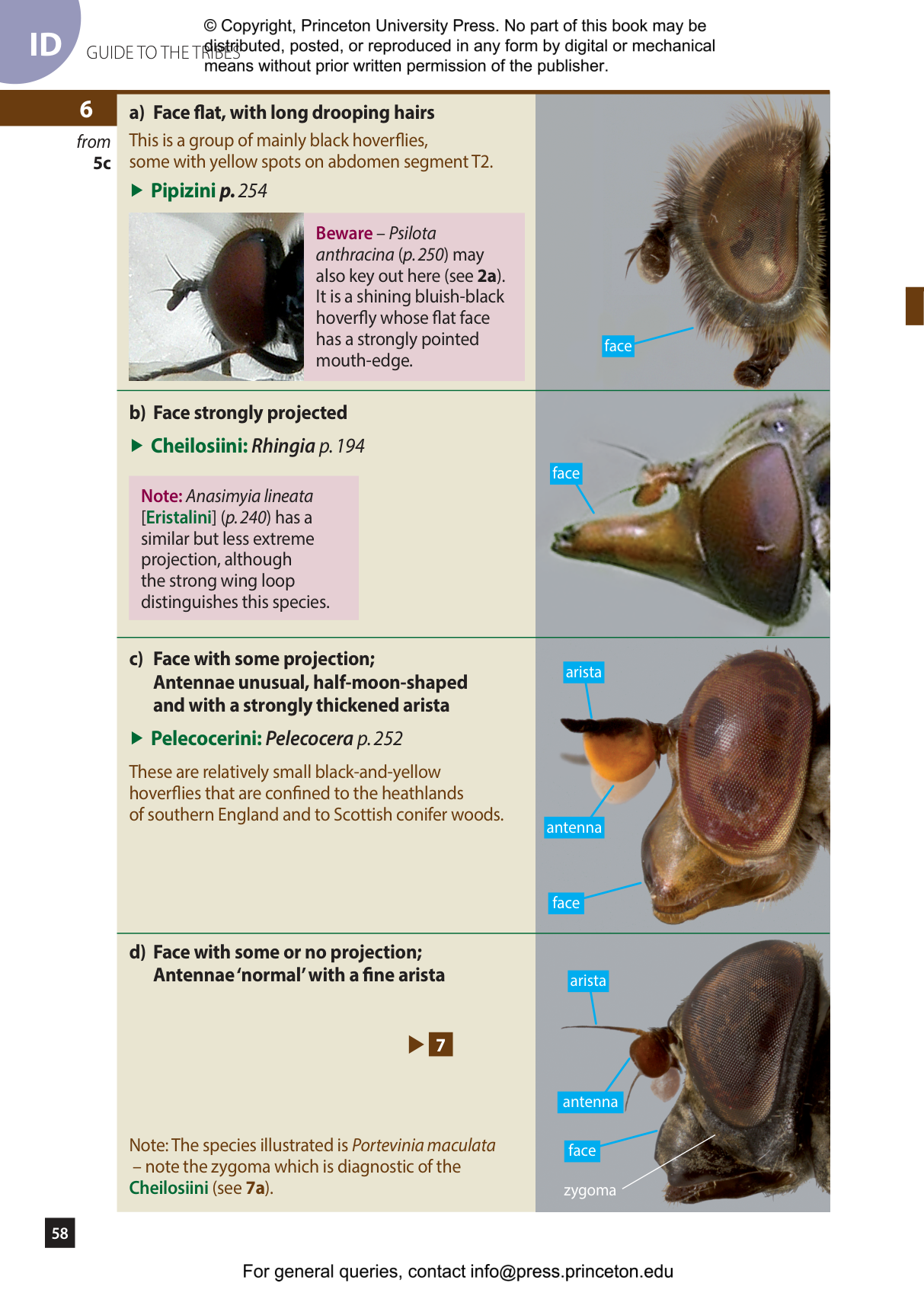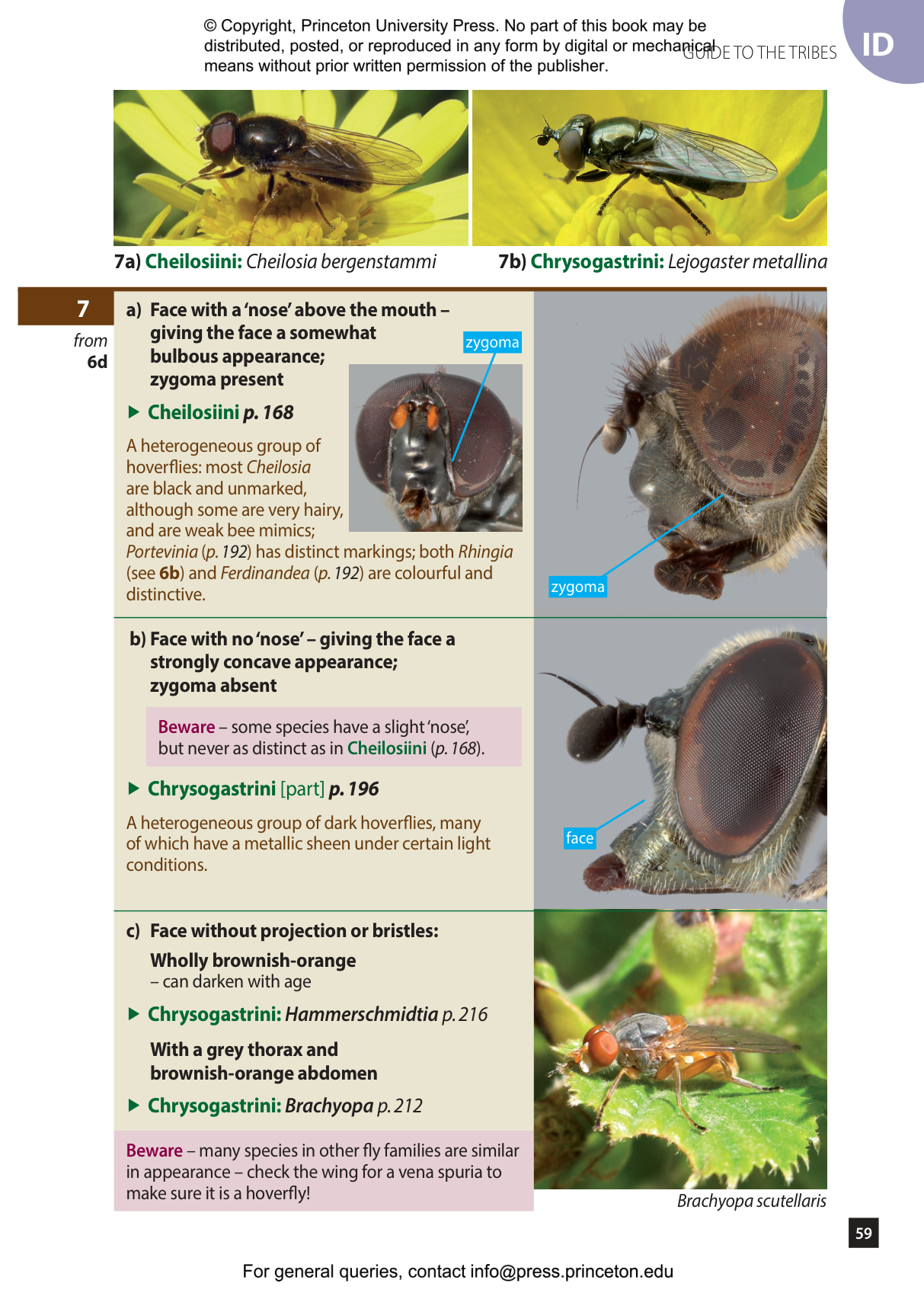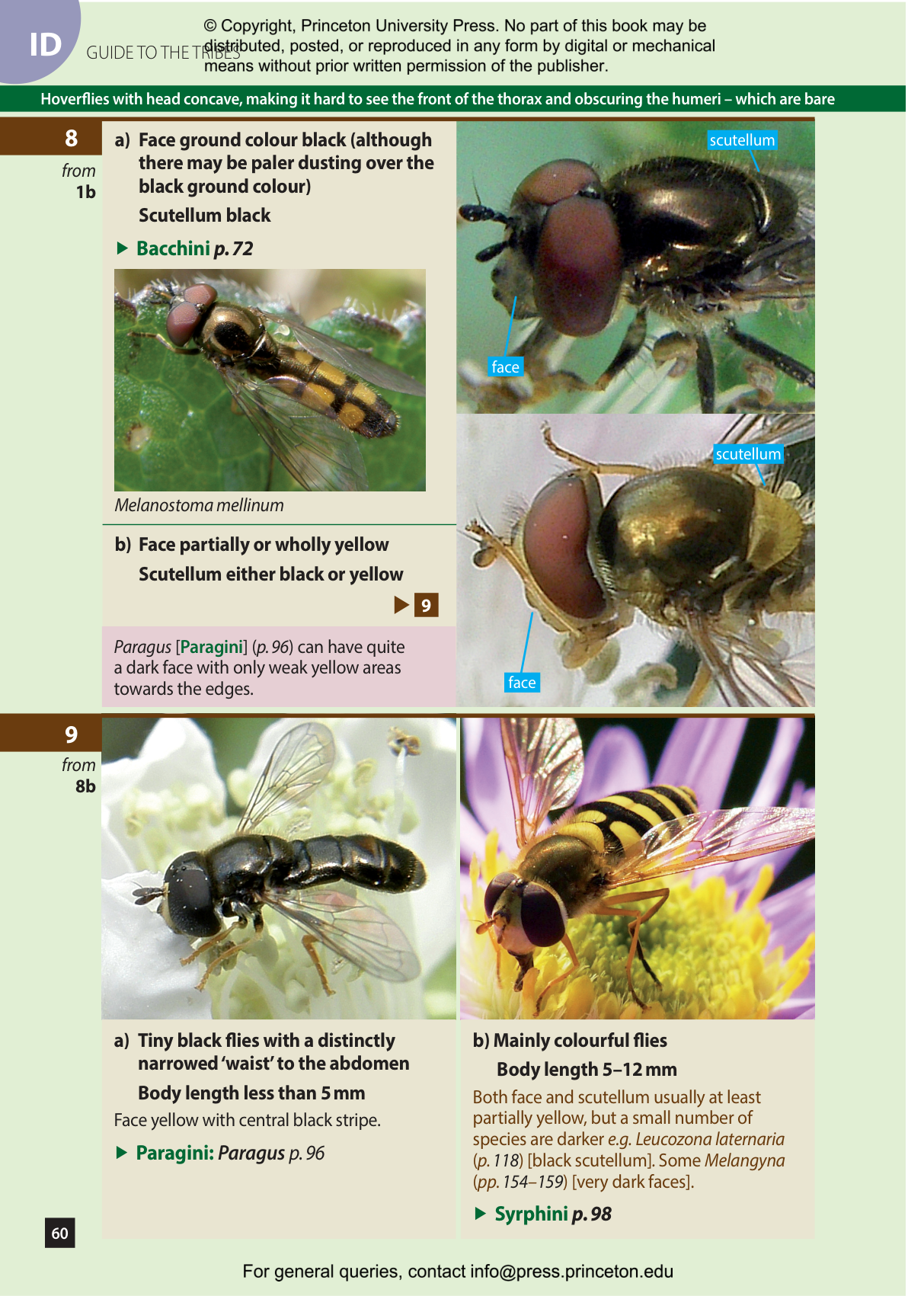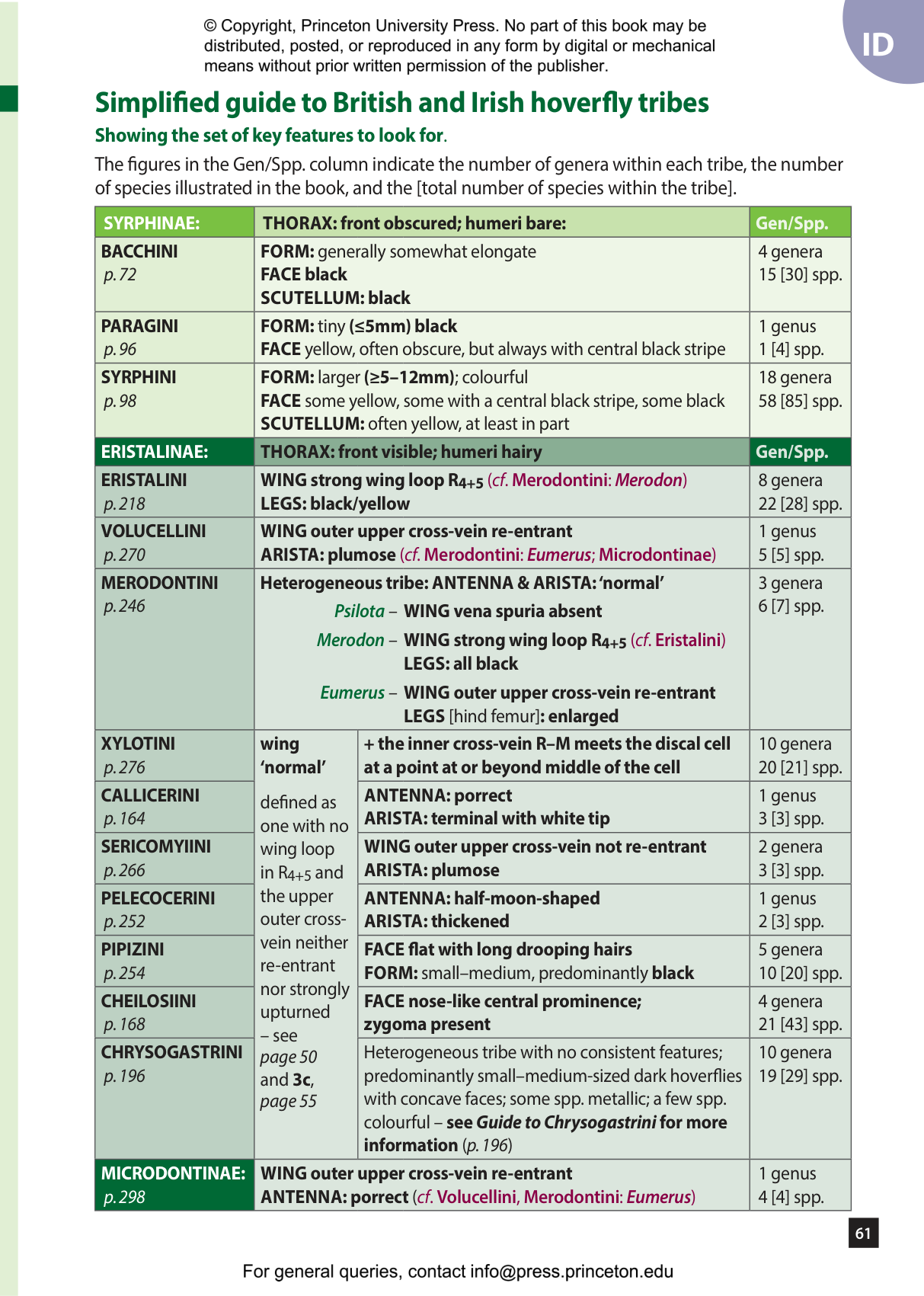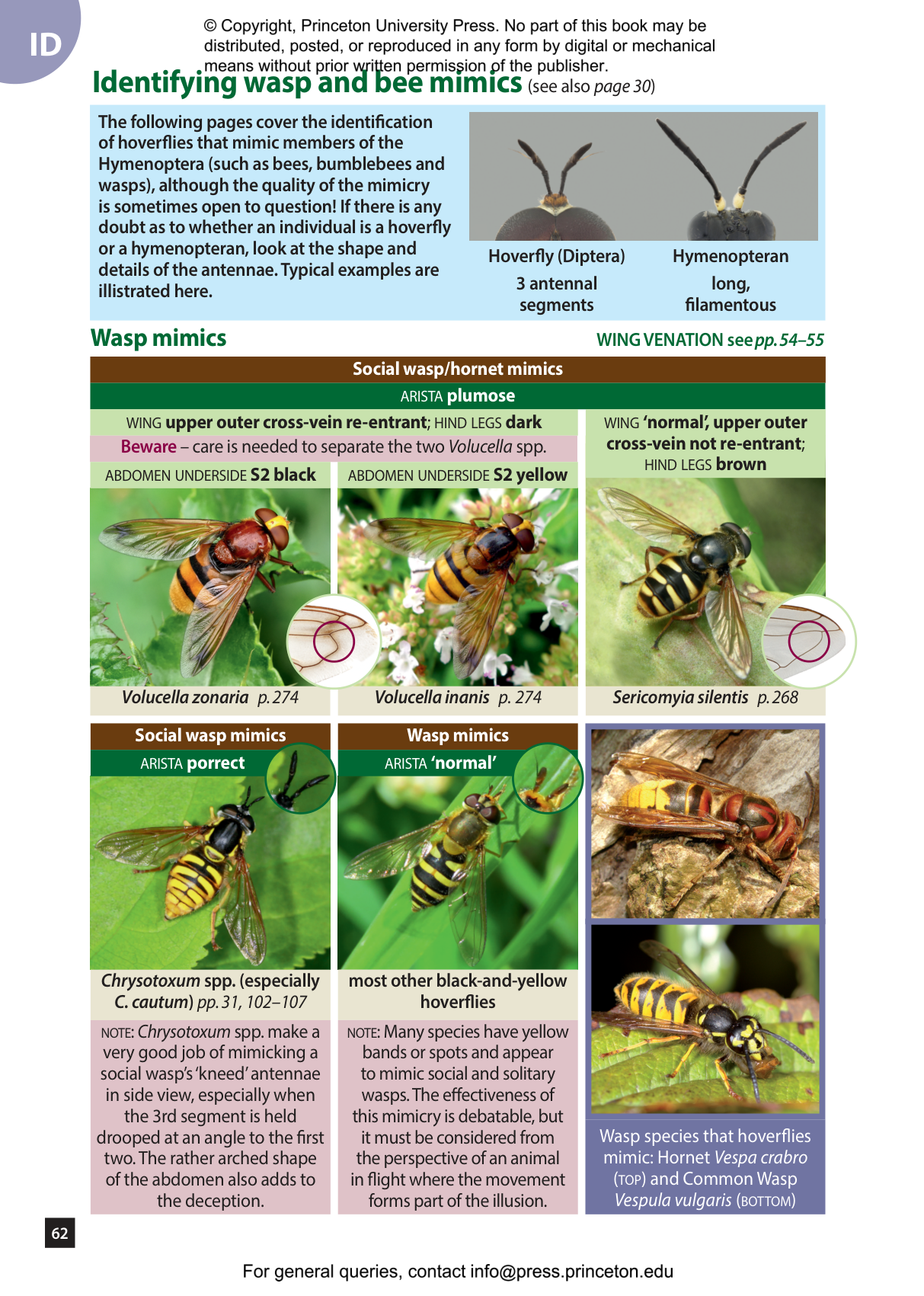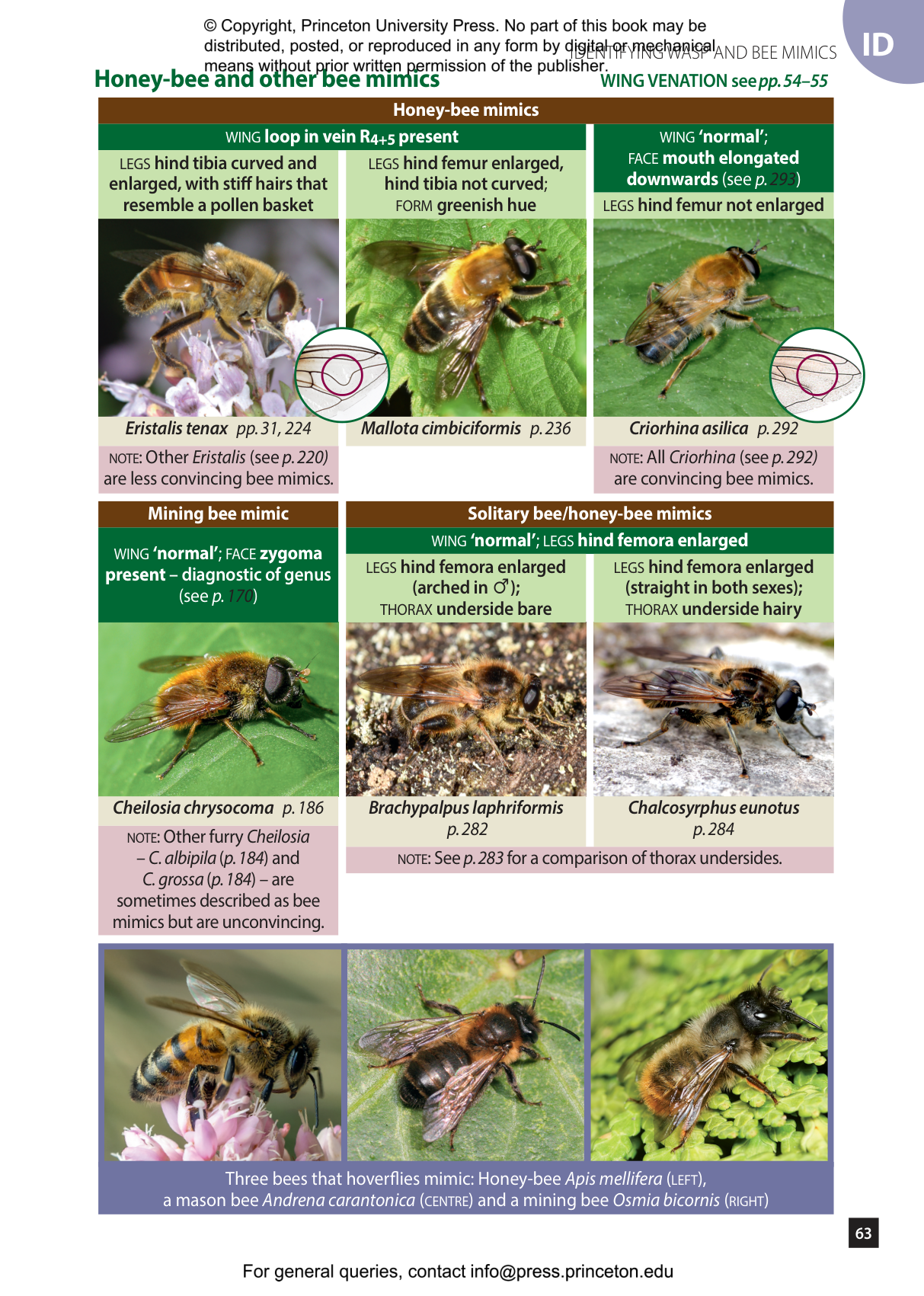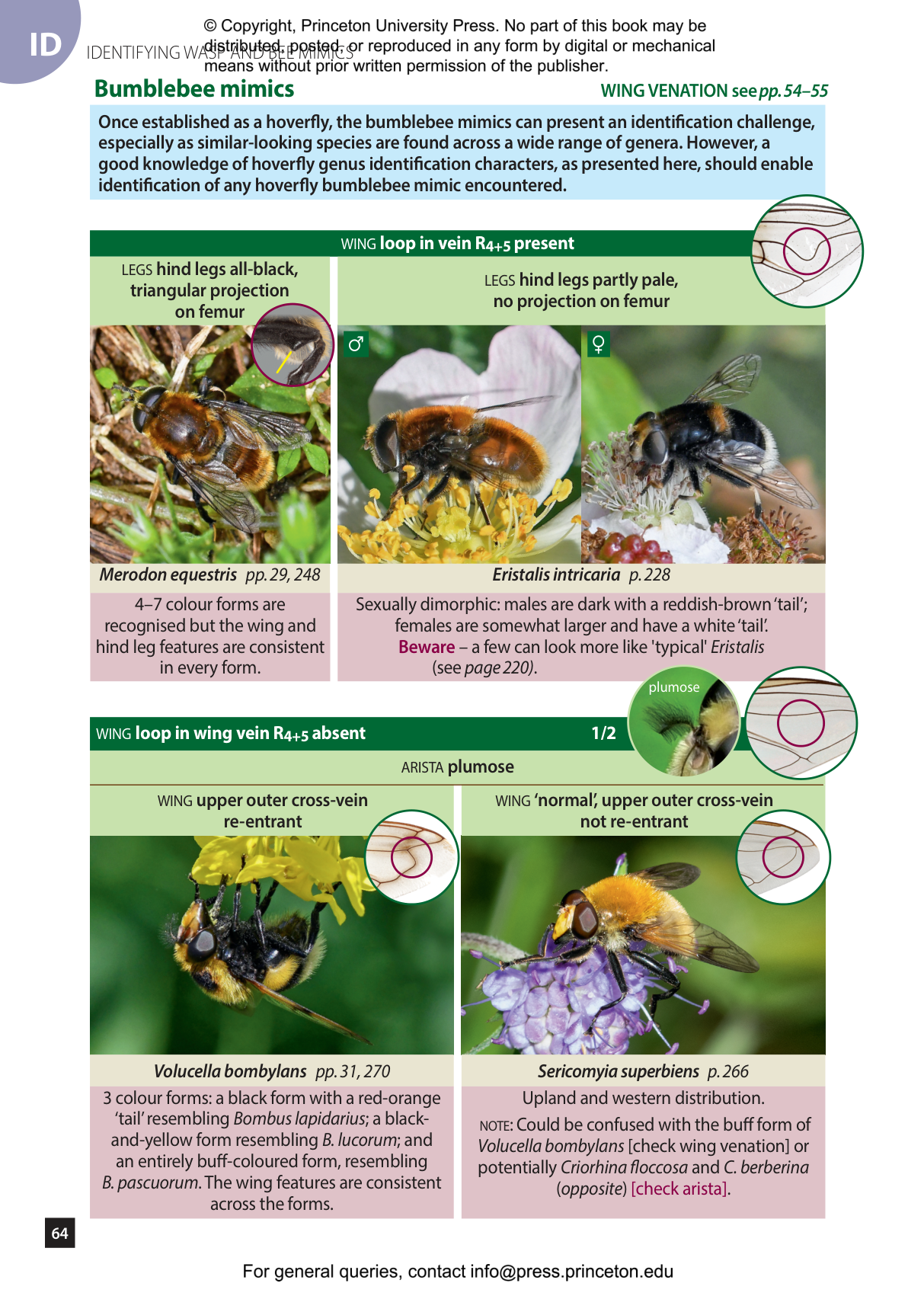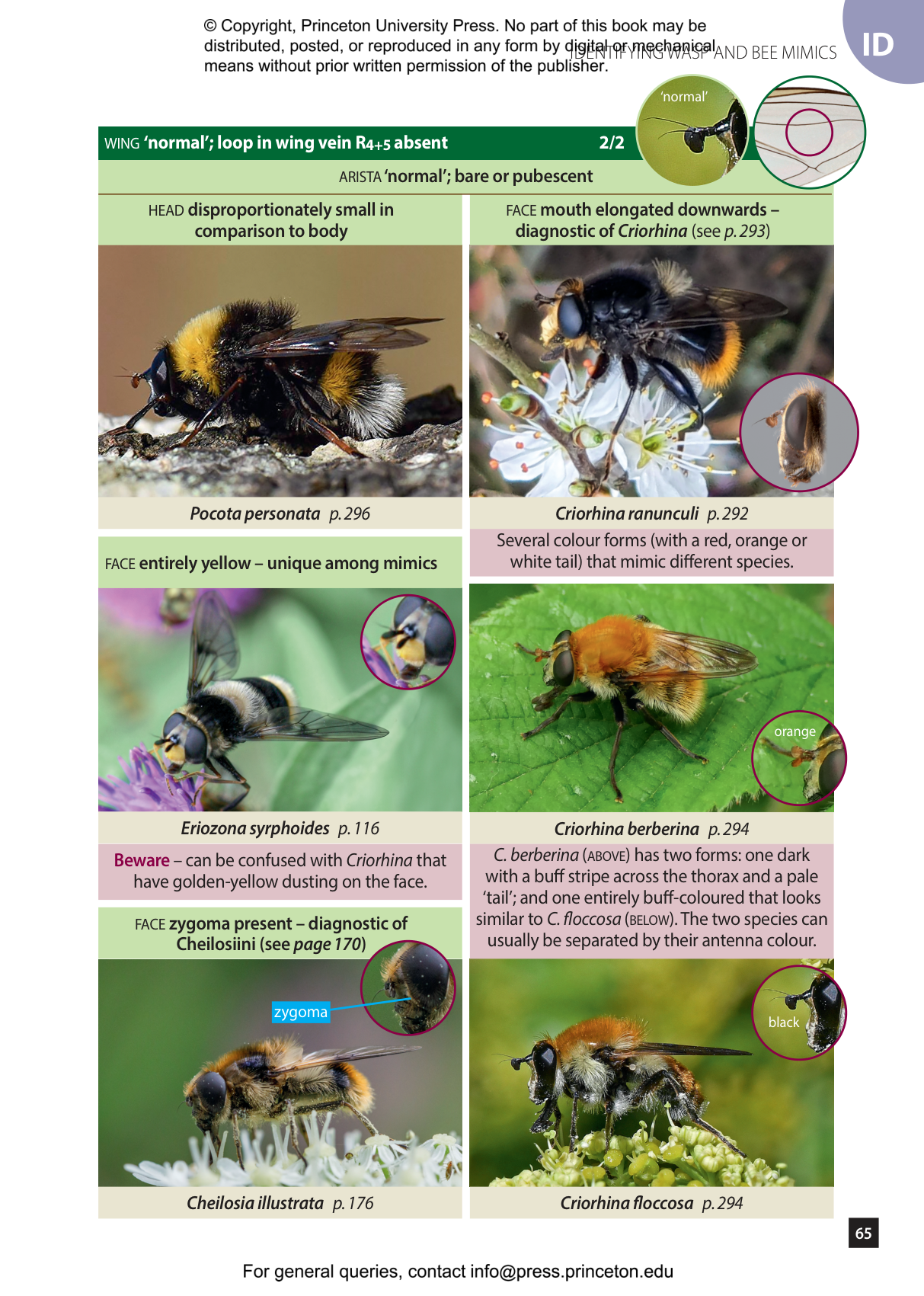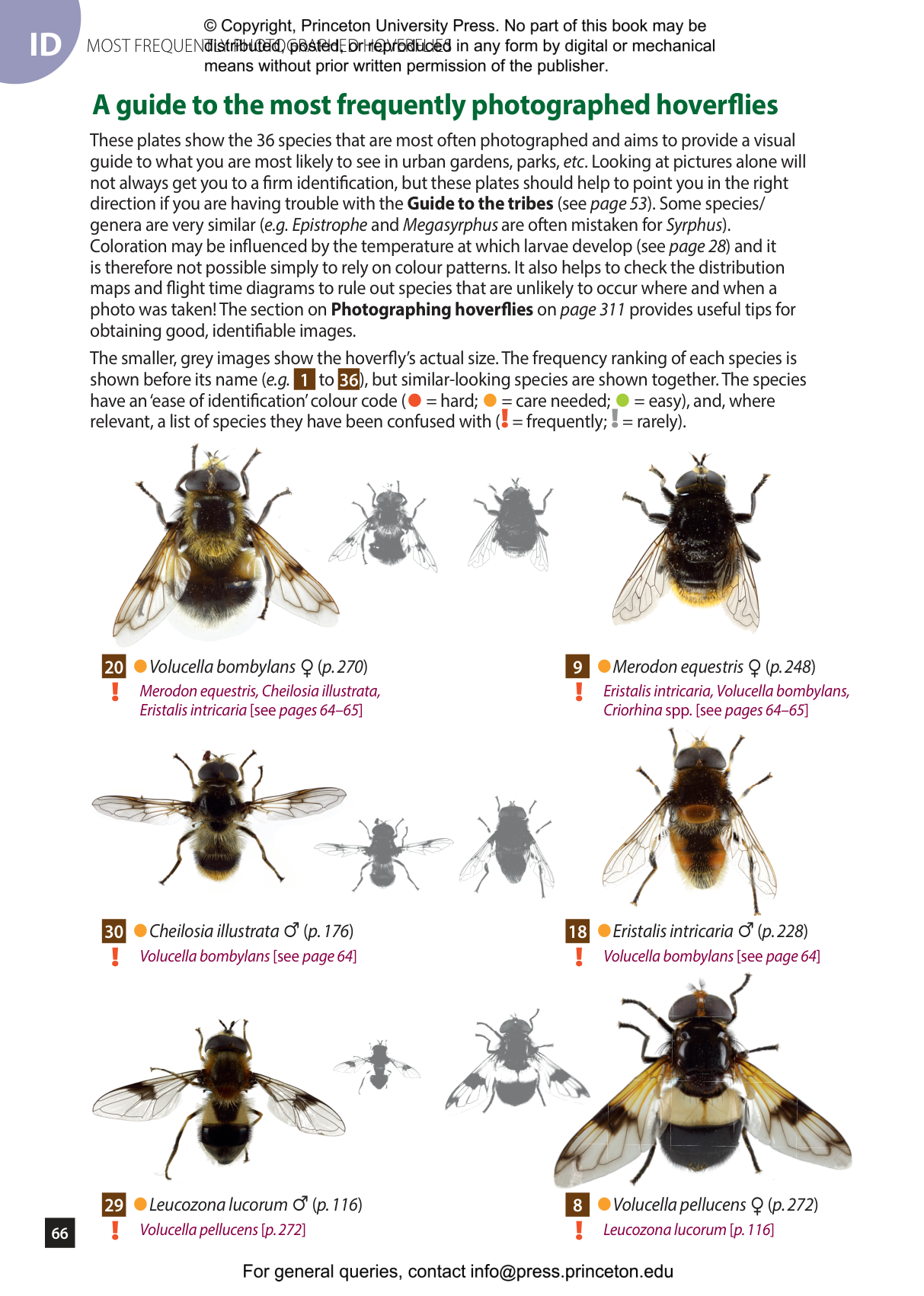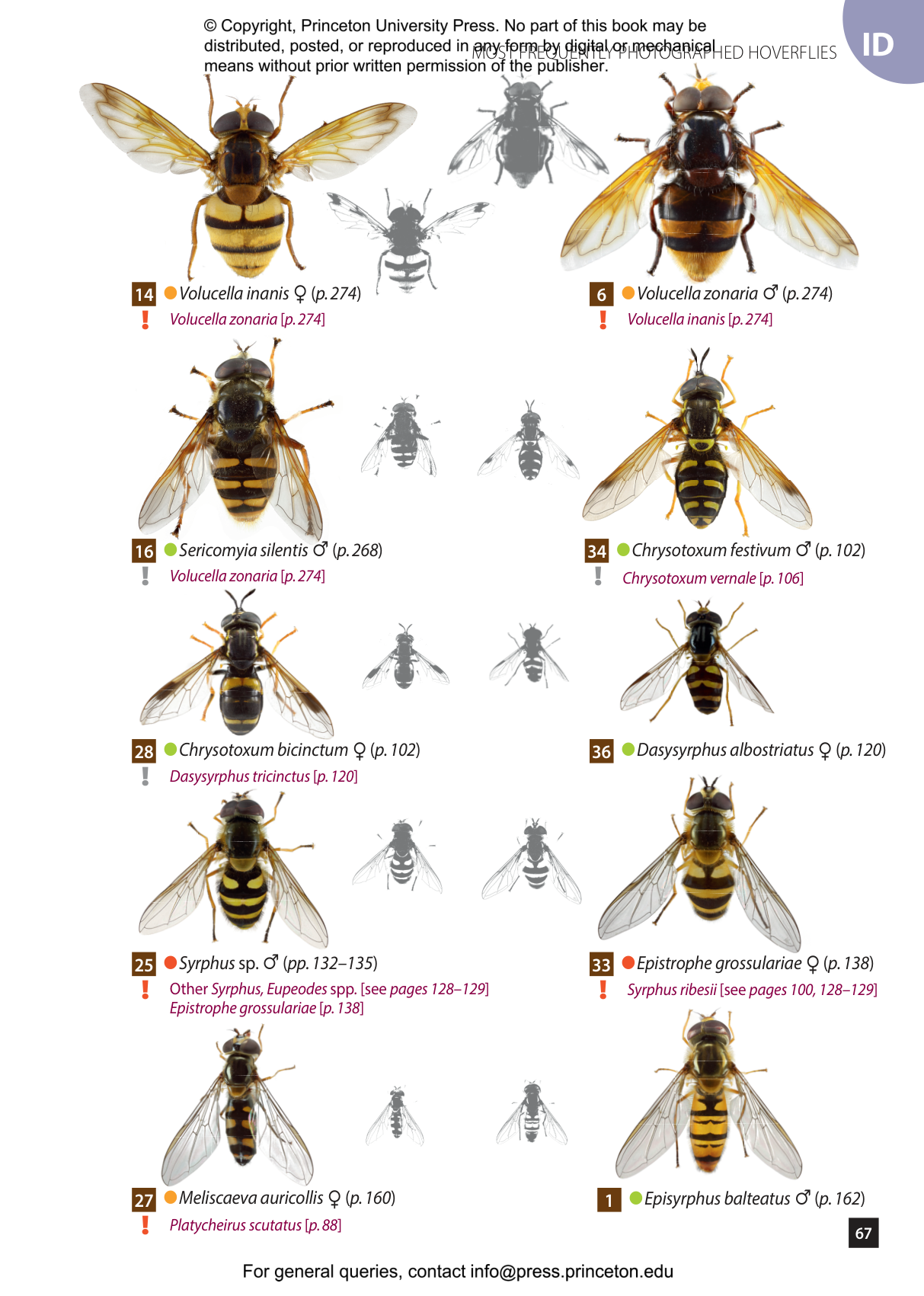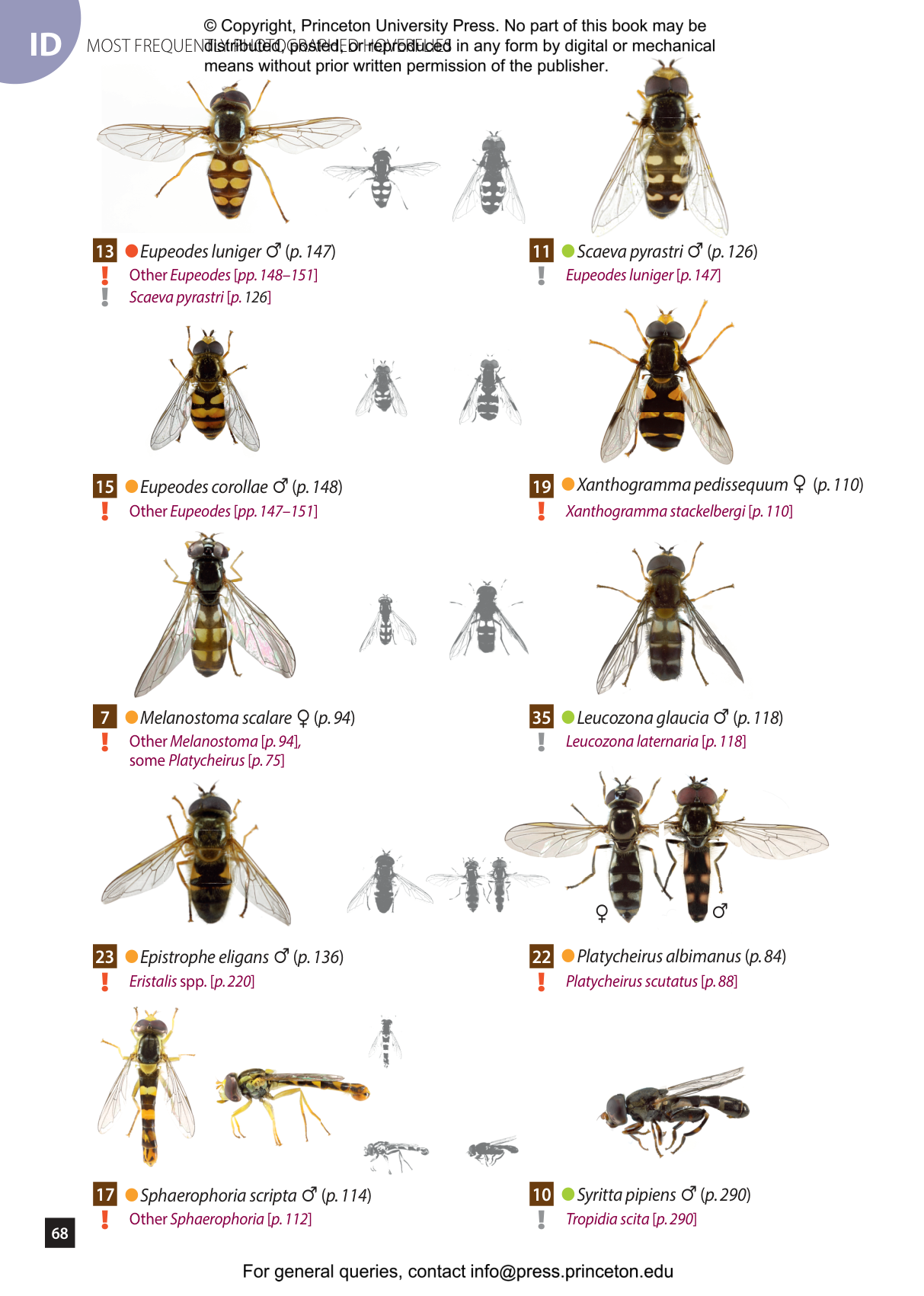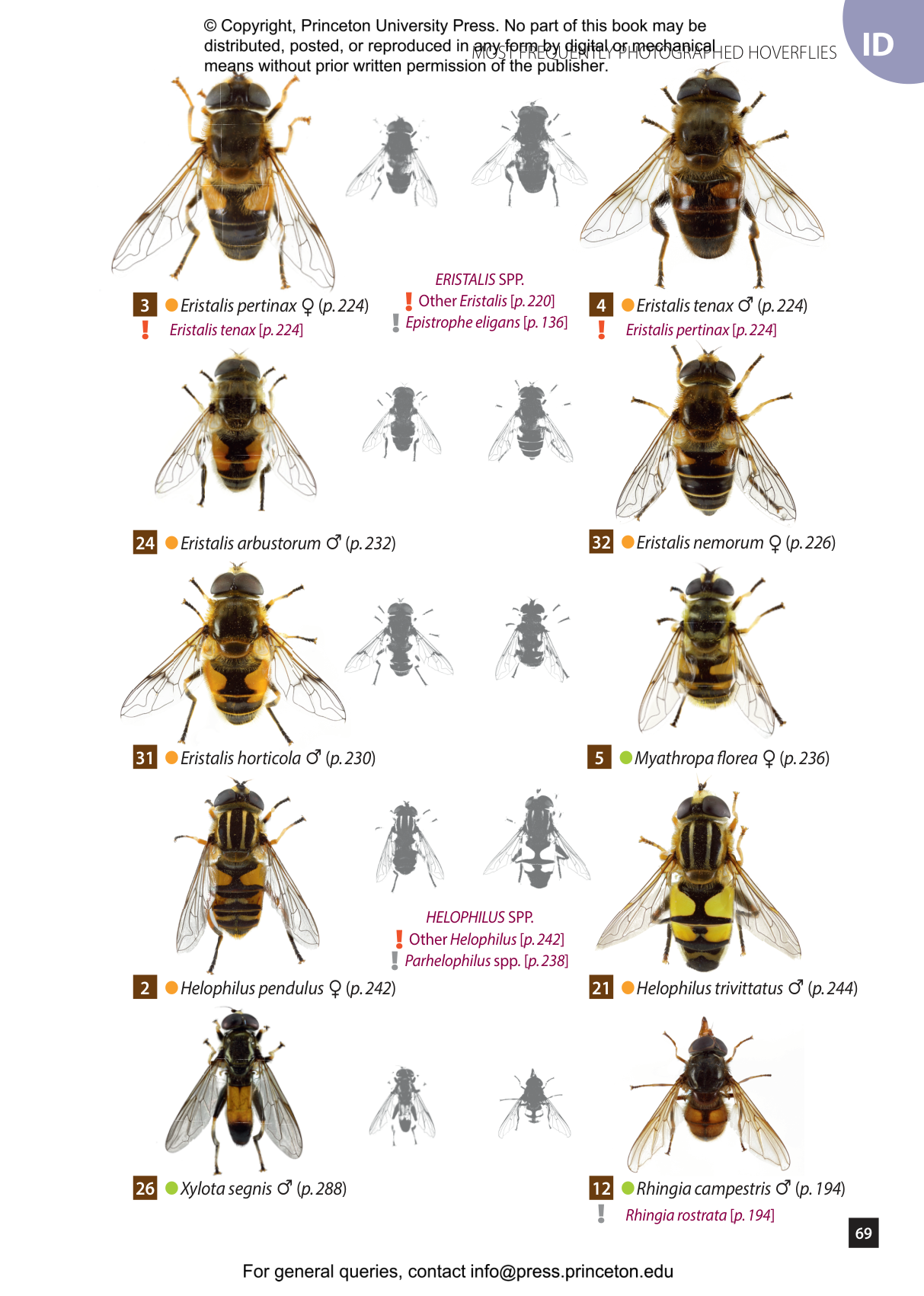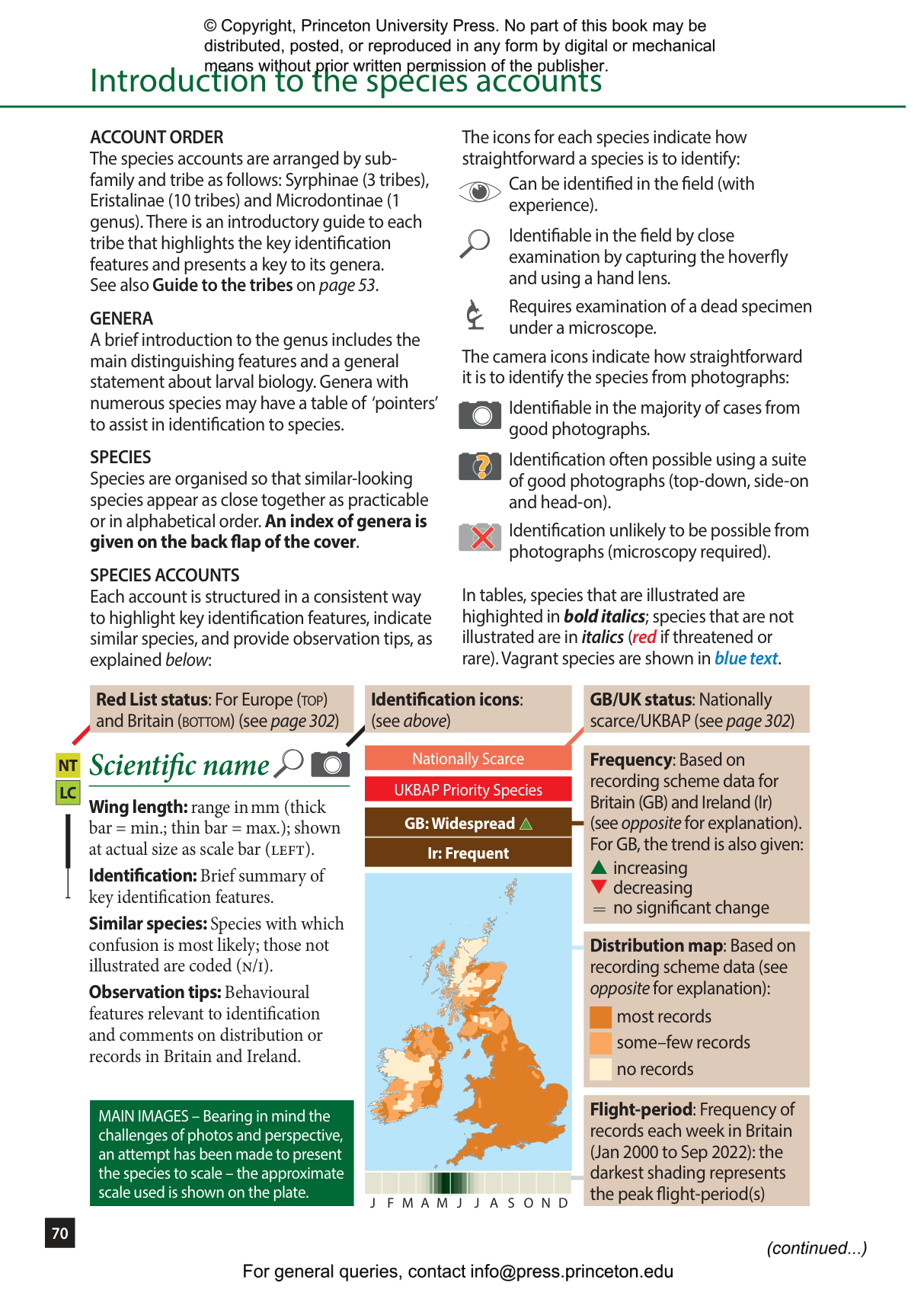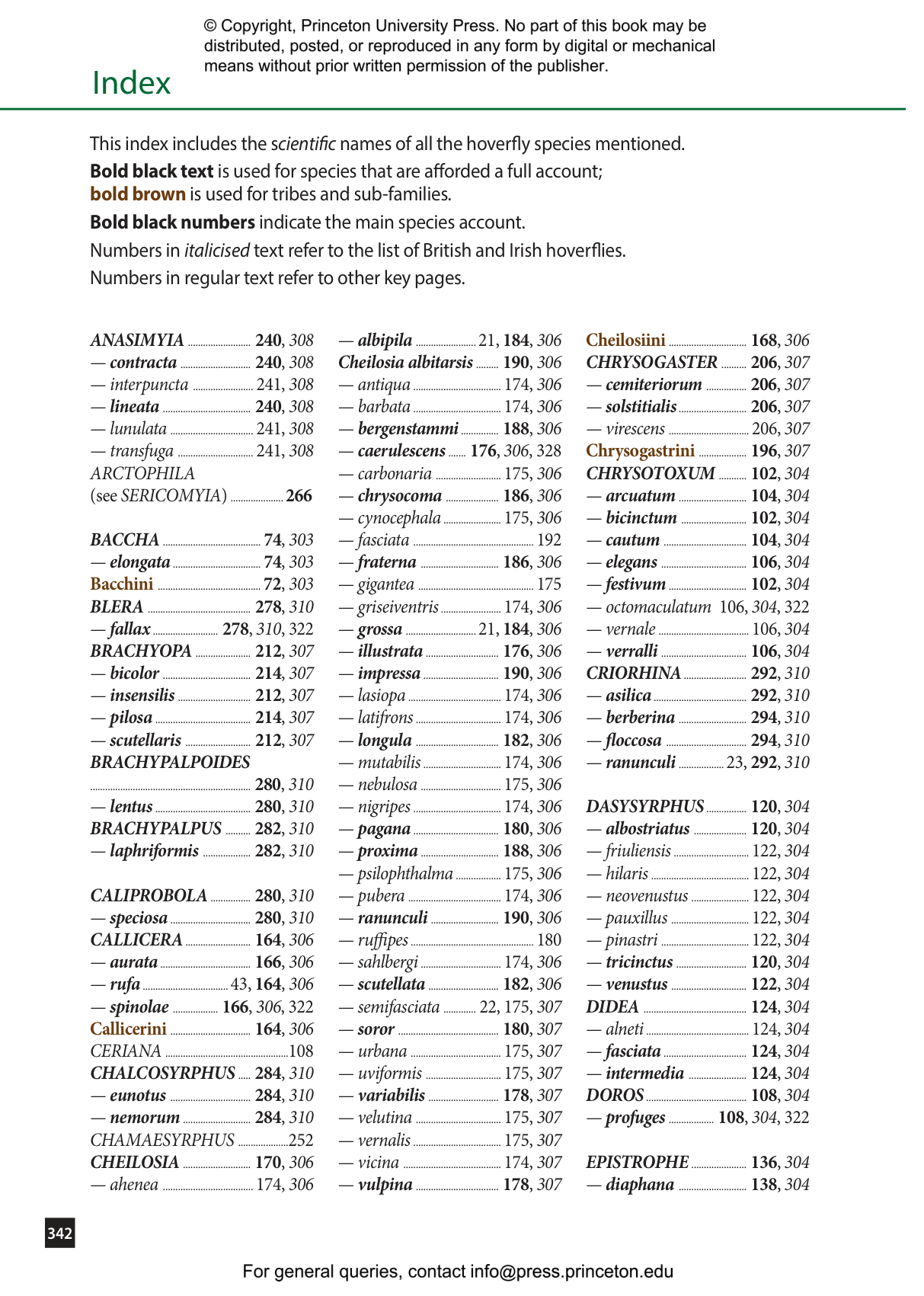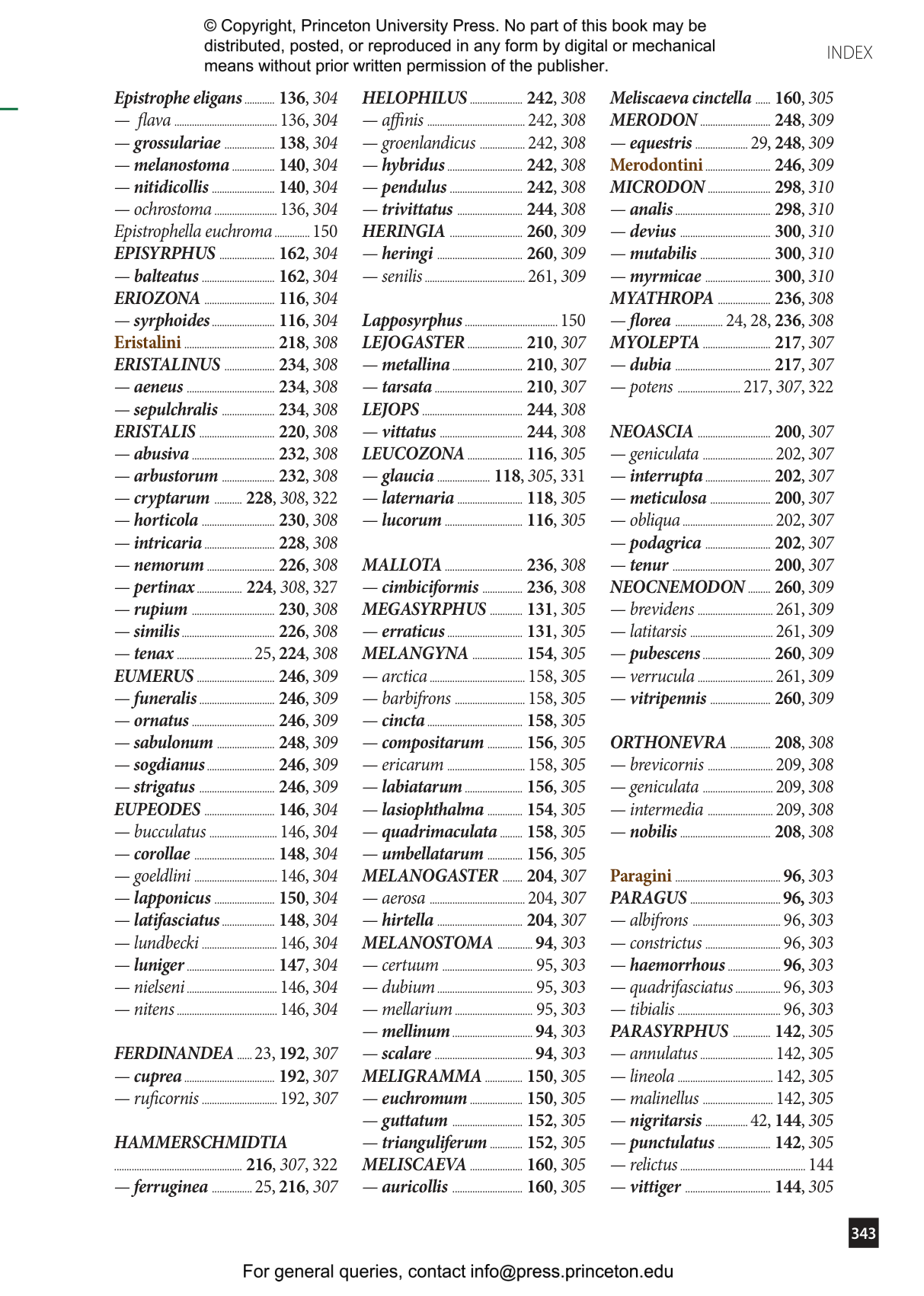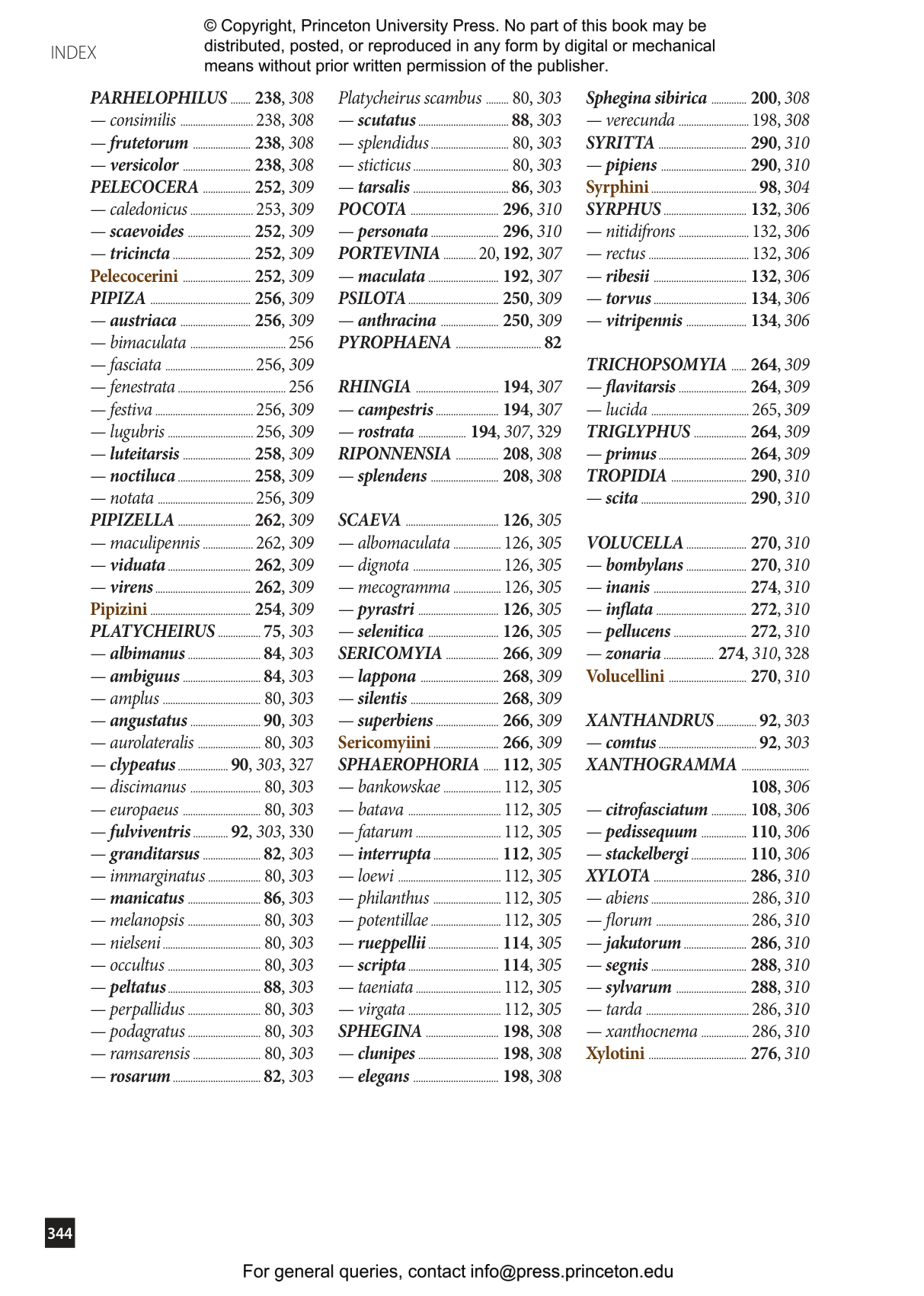Hoverflies of Britain and Ireland: Third Edition, Fully Revised and Updated


Paperback
- Price:
- $29.95/£25.00
- ISBN:
- Published (US):
- Dec 10, 2024
- Published (UK):
- Sep 24, 2024
- Pages:
- 344
- Size:
- 5.88 x 8.25 in.
- 660 color photos. 53 tables. 162 maps.
- Main_subject:
- Princeton Nature
ebook
Hoverflies of Britain and Ireland is a beautifully illustrated photographic field guide to this increasingly popular group of insects, focusing on the species that can be most readily identified. It is the perfect companion for wildlife enthusiasts, professional ecologists and anyone with an interest in this fascinating group of insects, and is designed to appeal to beginners and experts alike. This updated third edition covers 13 additional species and offers a host of improvements to aid reliable identification.
Accessible, authoritative and easy-to-use, this book features an essential guide to hoverfly tribes and presents hundreds of remarkable photographs of hoverflies in their various life stages, including images of at least one representative from each of the British and Irish genera. The species included are mainly those that can be identified by eye or using a magnifying glass. Individual species accounts highlight key identification features, provide information on behaviour and habitat requirements, status, population trend and flight-period, and include an up-to-date distribution map covering Britain and Ireland. Sections on hoverfly biology, where and when to find hoverflies, legislation and conservation, recording, putting data to good use and gardening for hoverflies are also included.
- Features 1,048 stunning photographs, 400 more than in the previous edition
- Provides detailed information on 177 species, including at least one from each of the 69 genera recorded
- Updated taxonomy, nomenclature and information on status and population trends
- Includes a complete list of the 285 species recorded to date, with an indication of how difficult each is to identify in the field and from photographs
